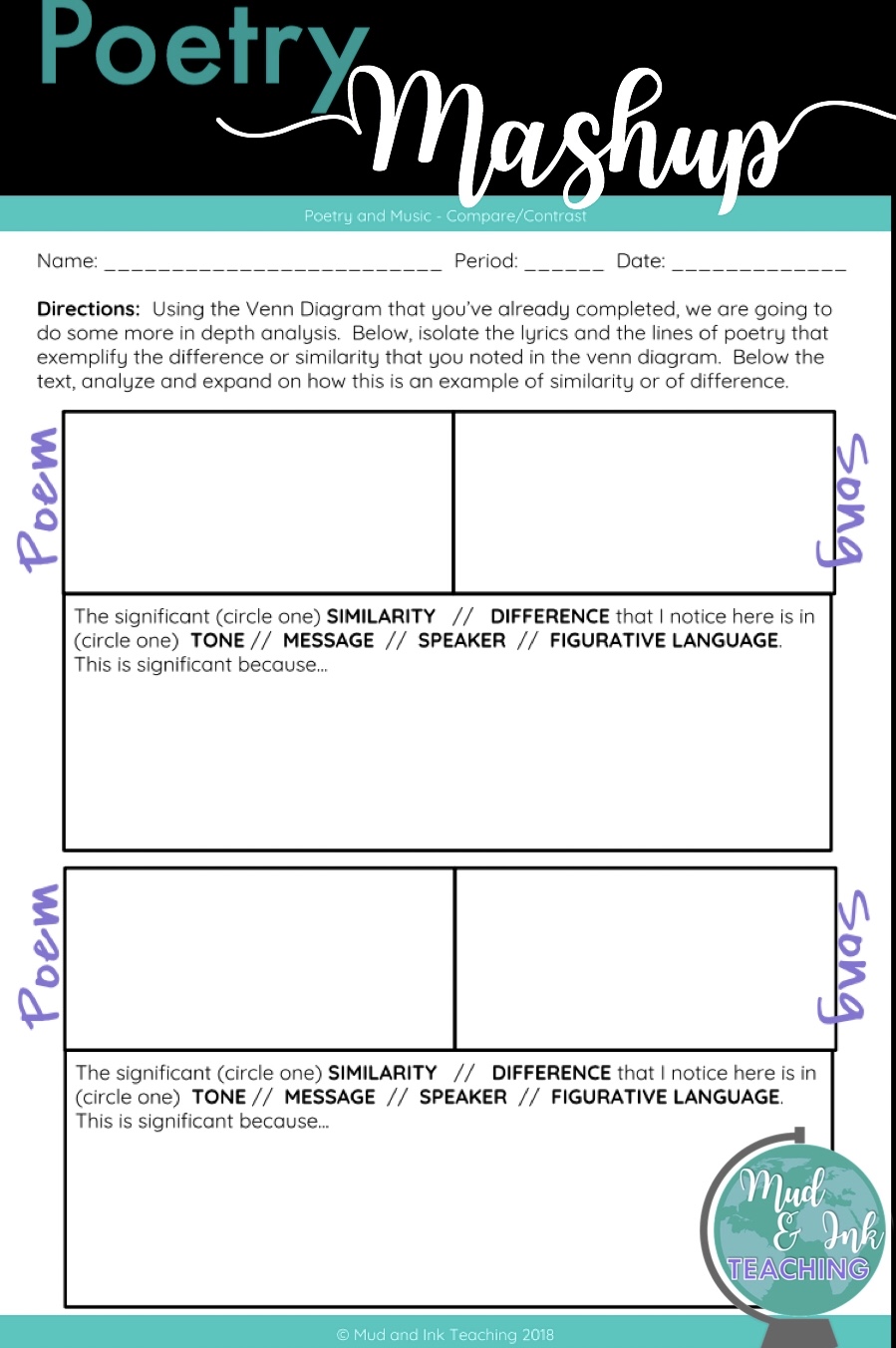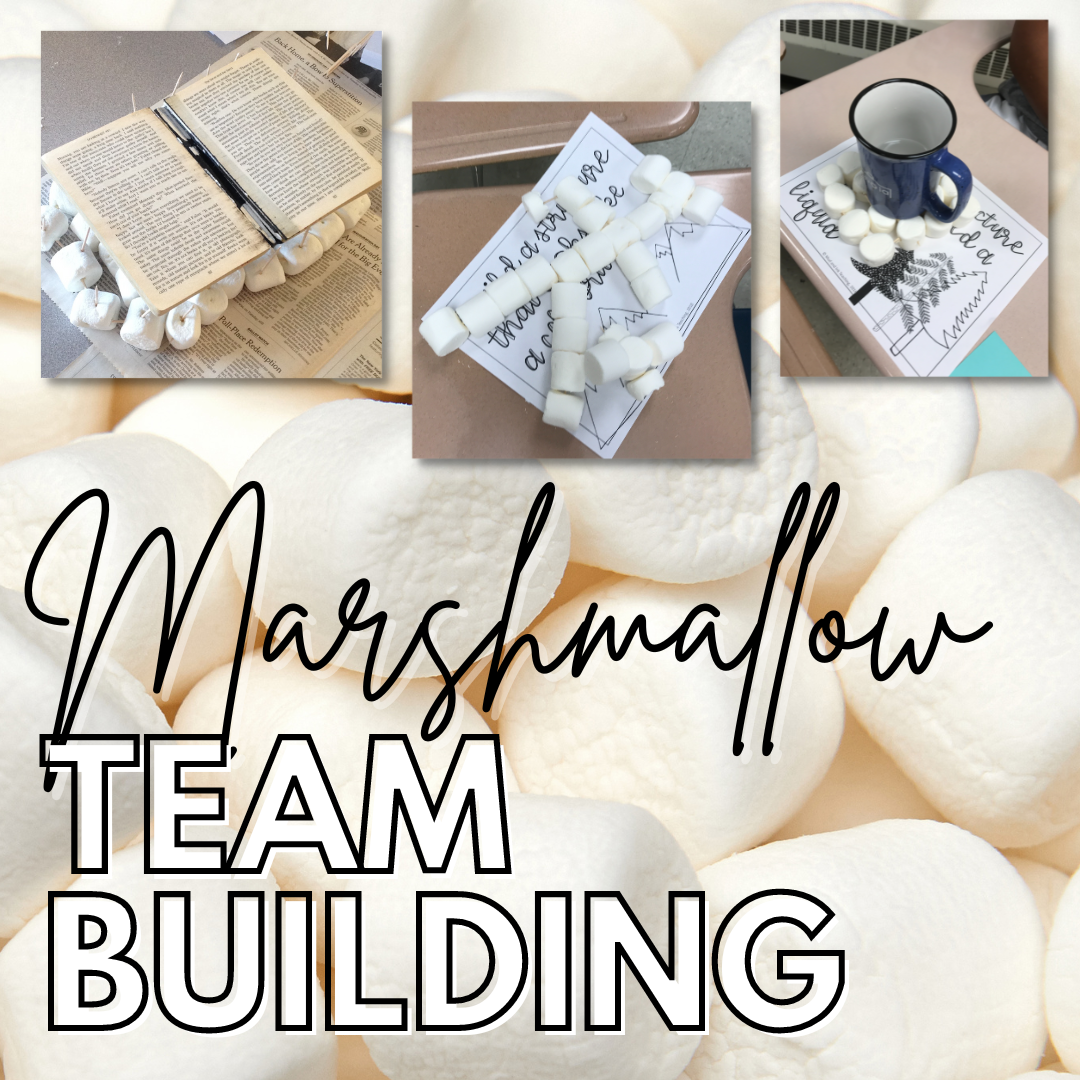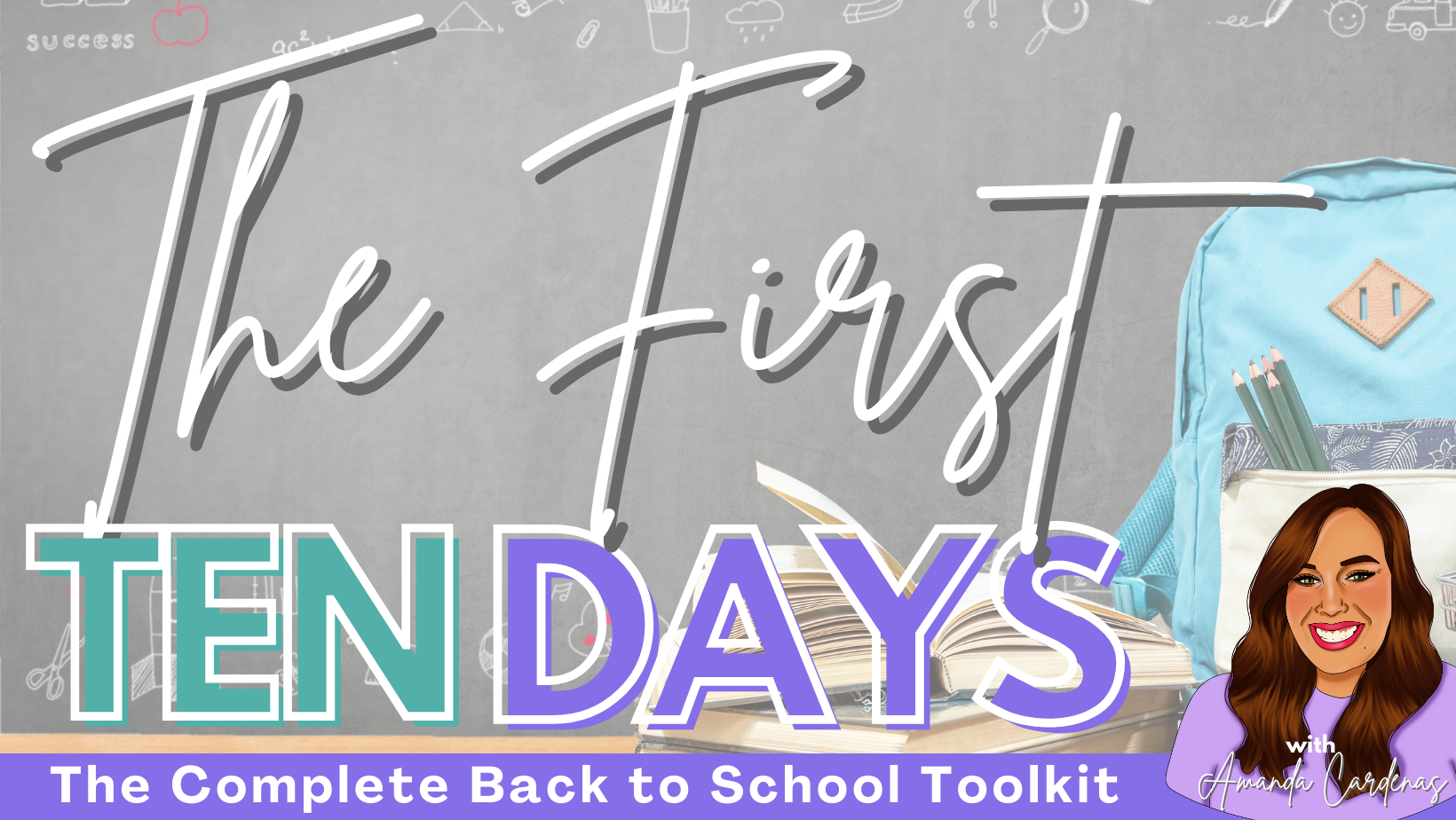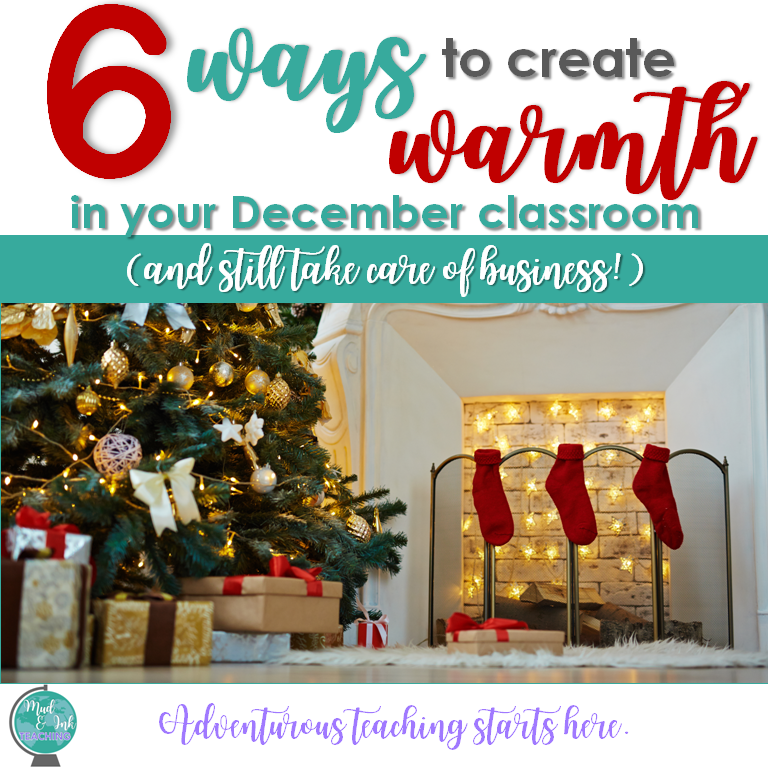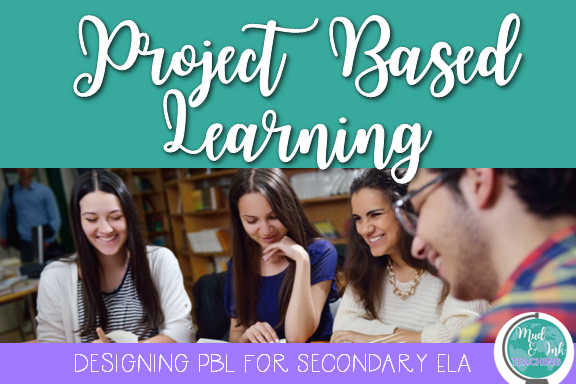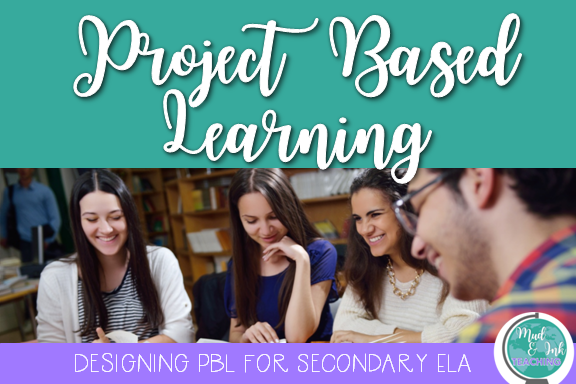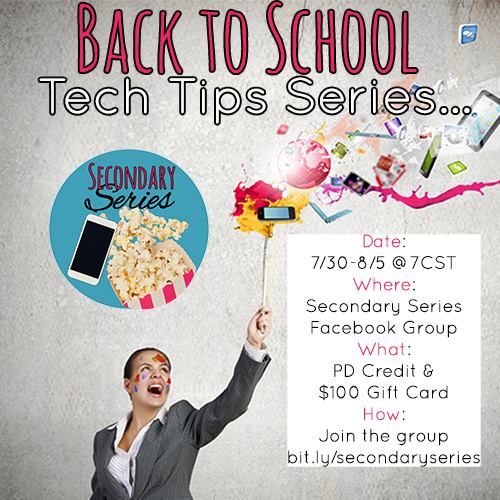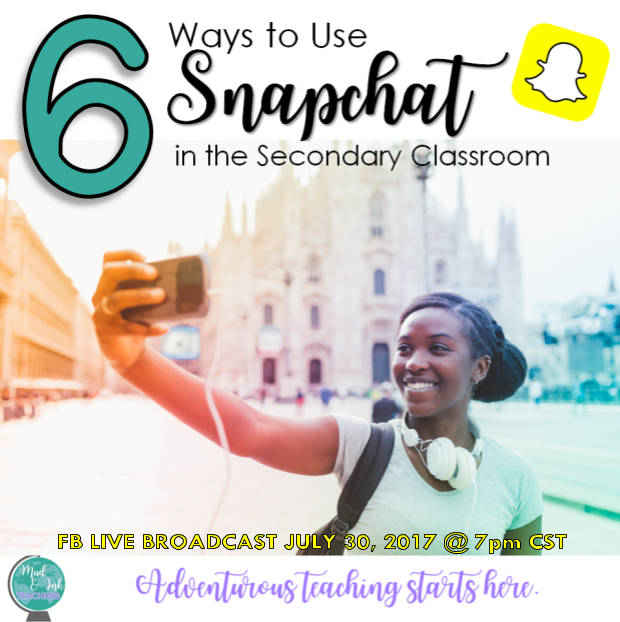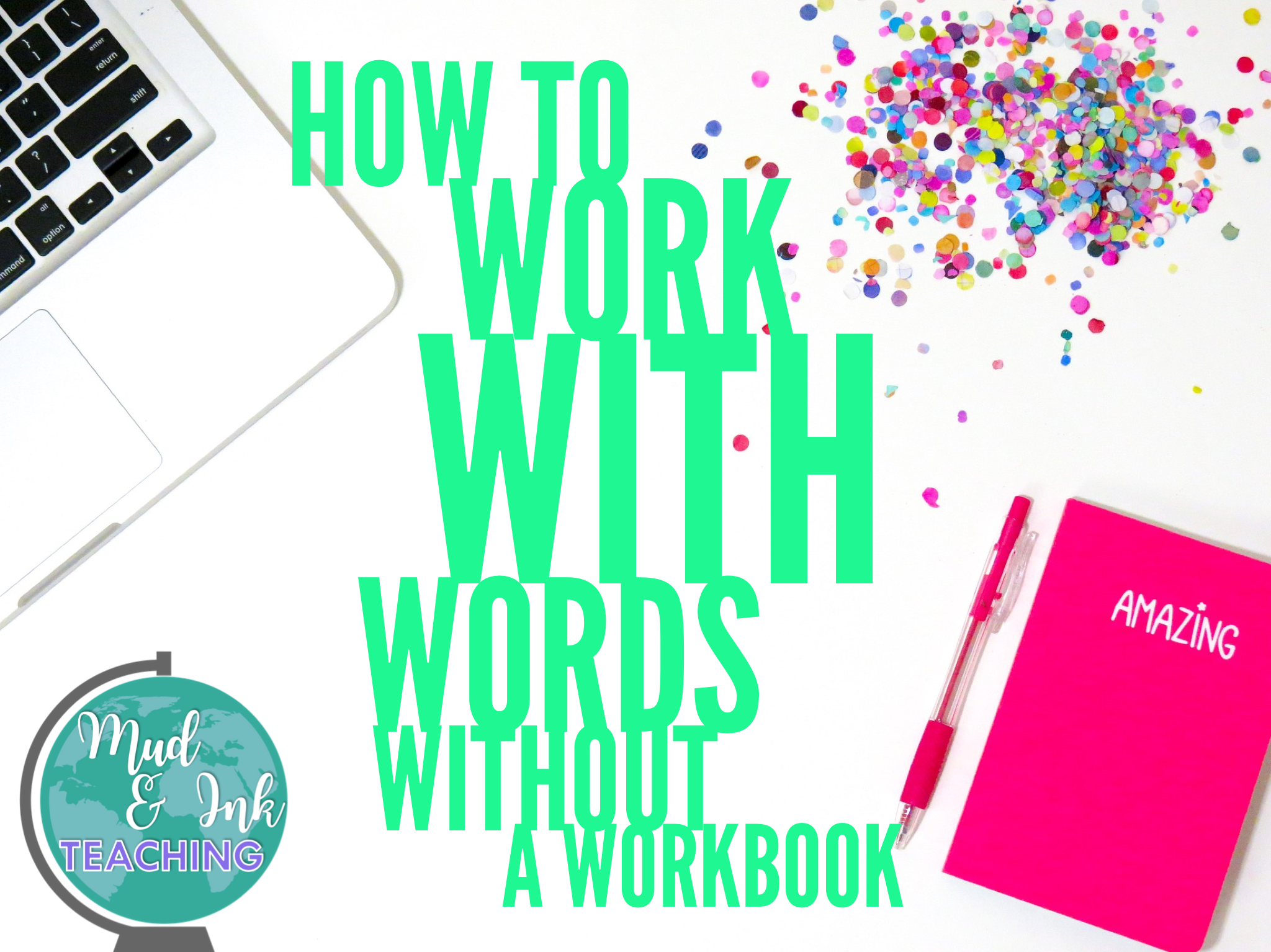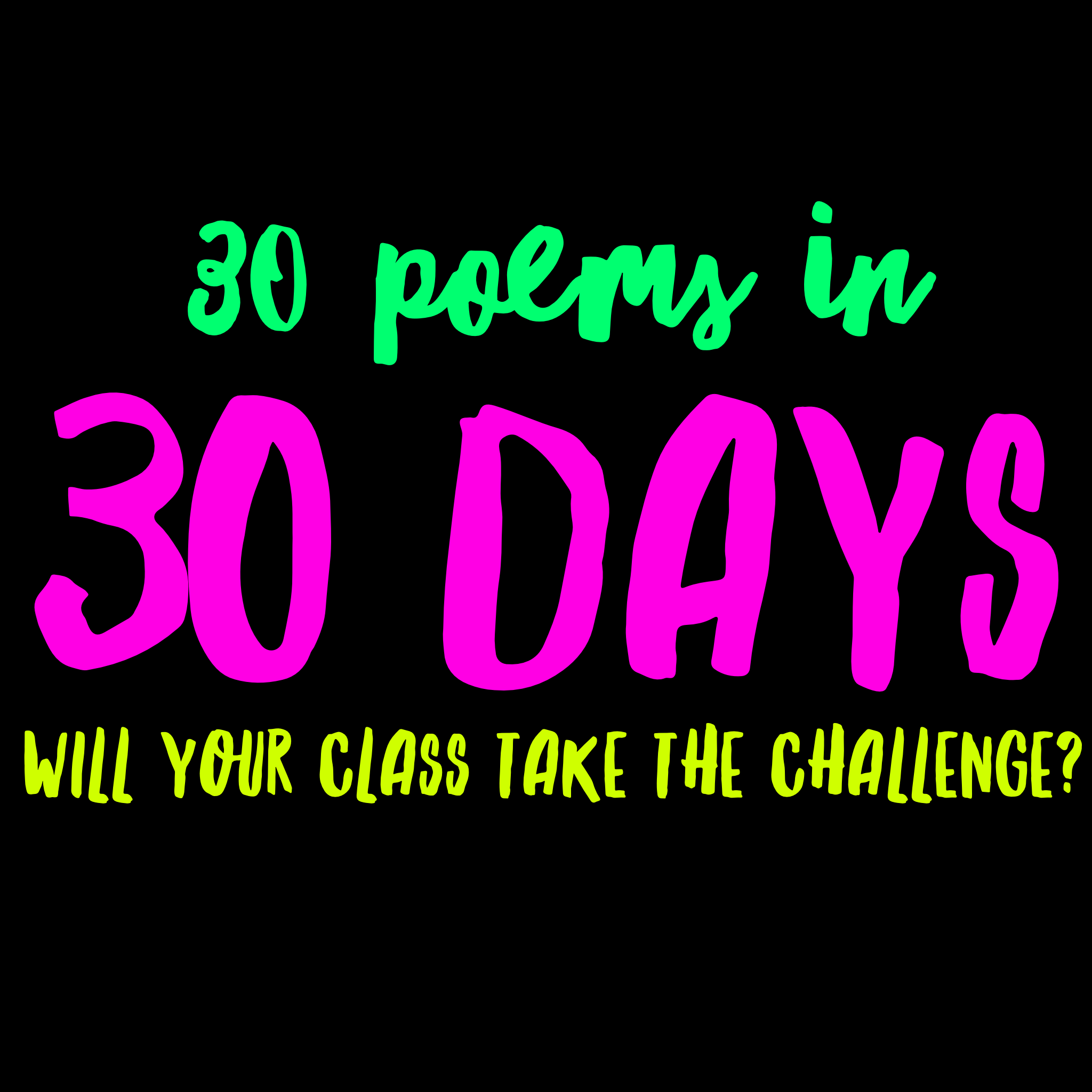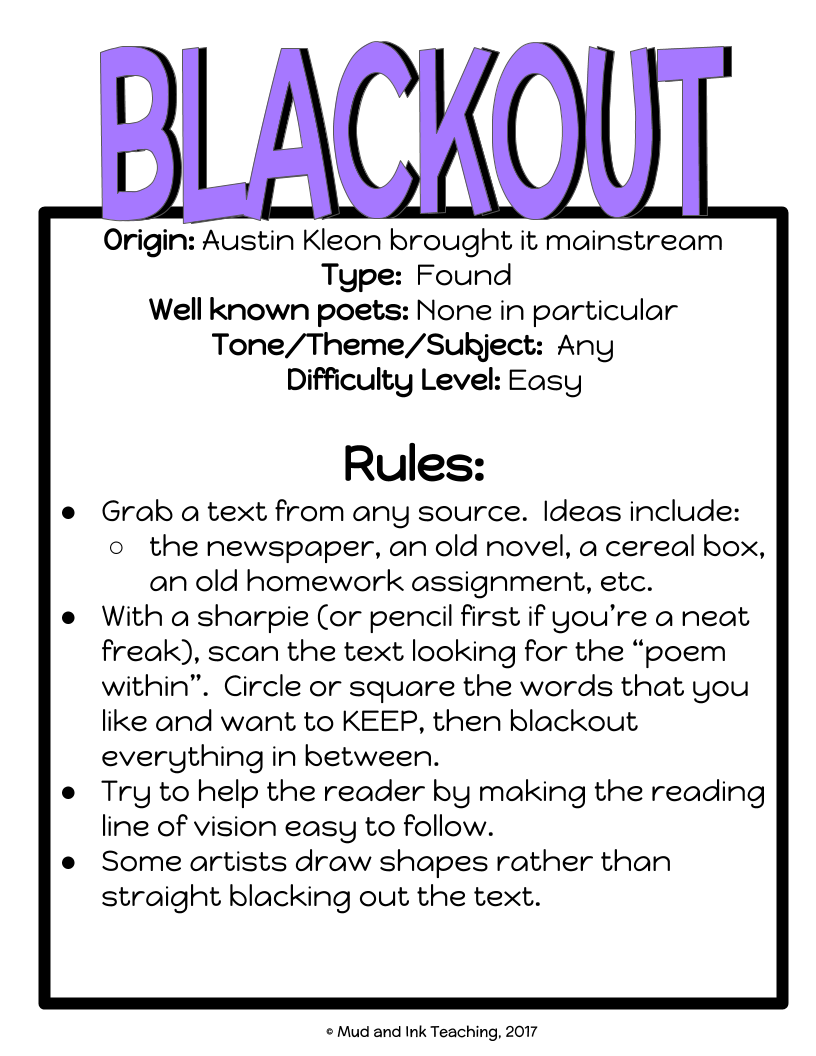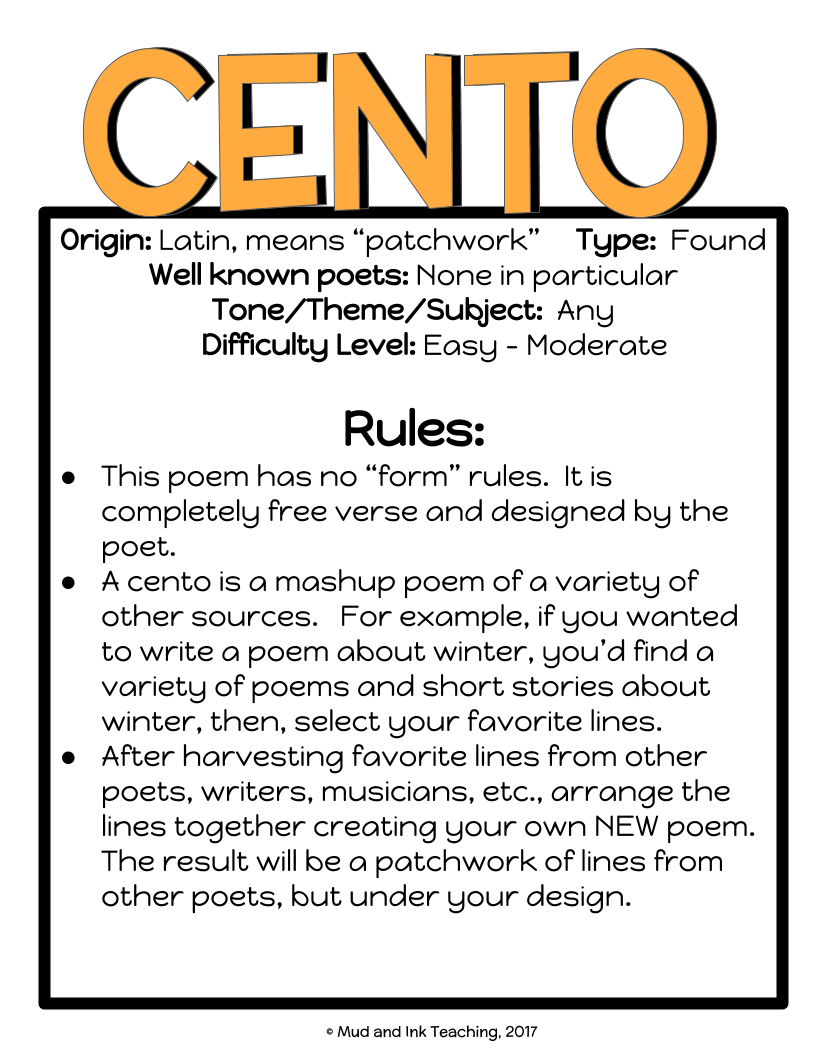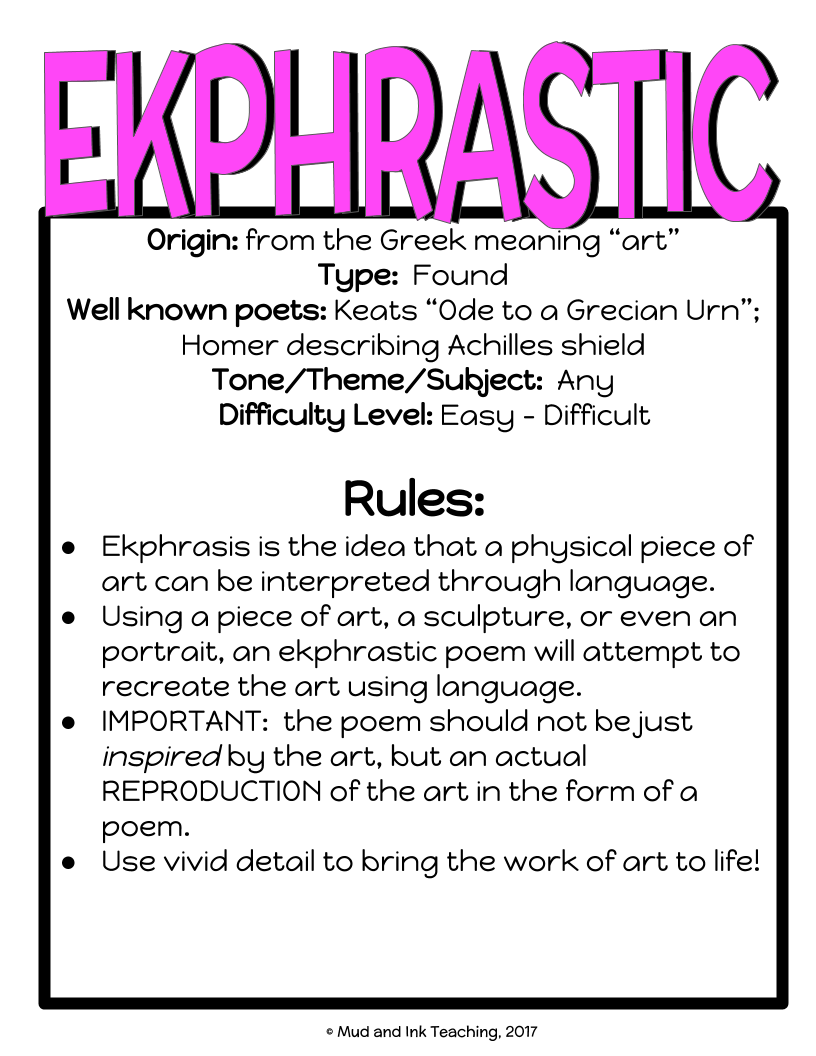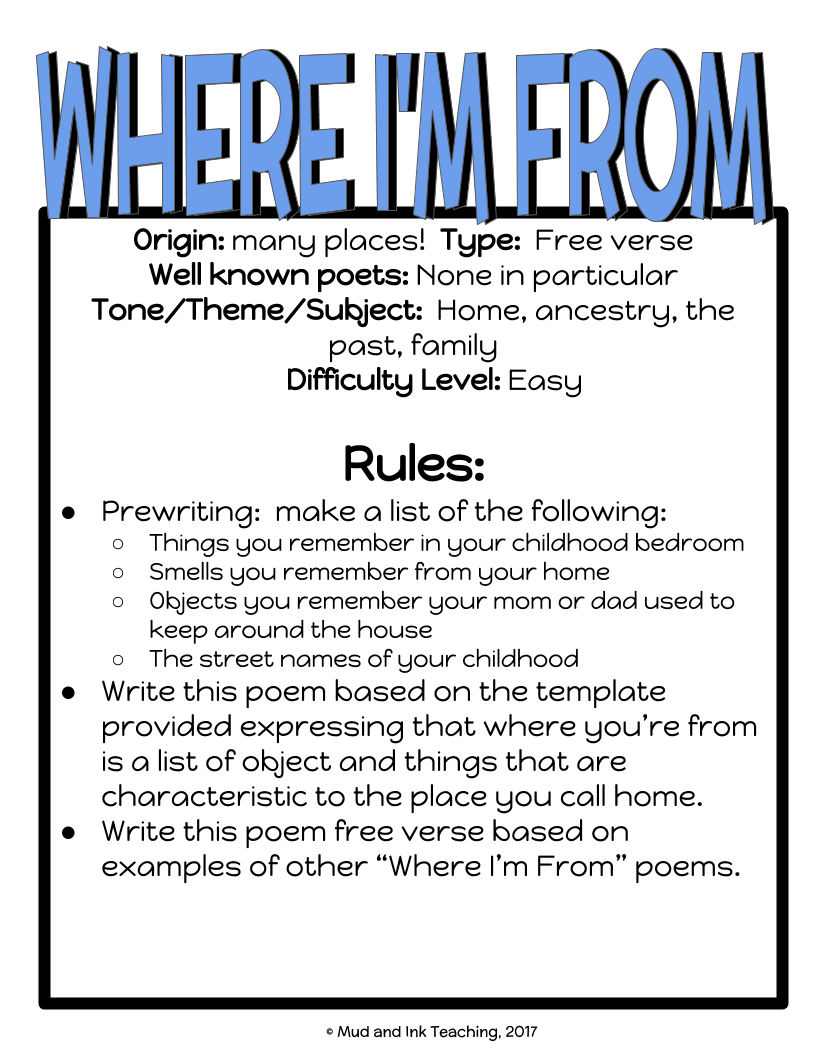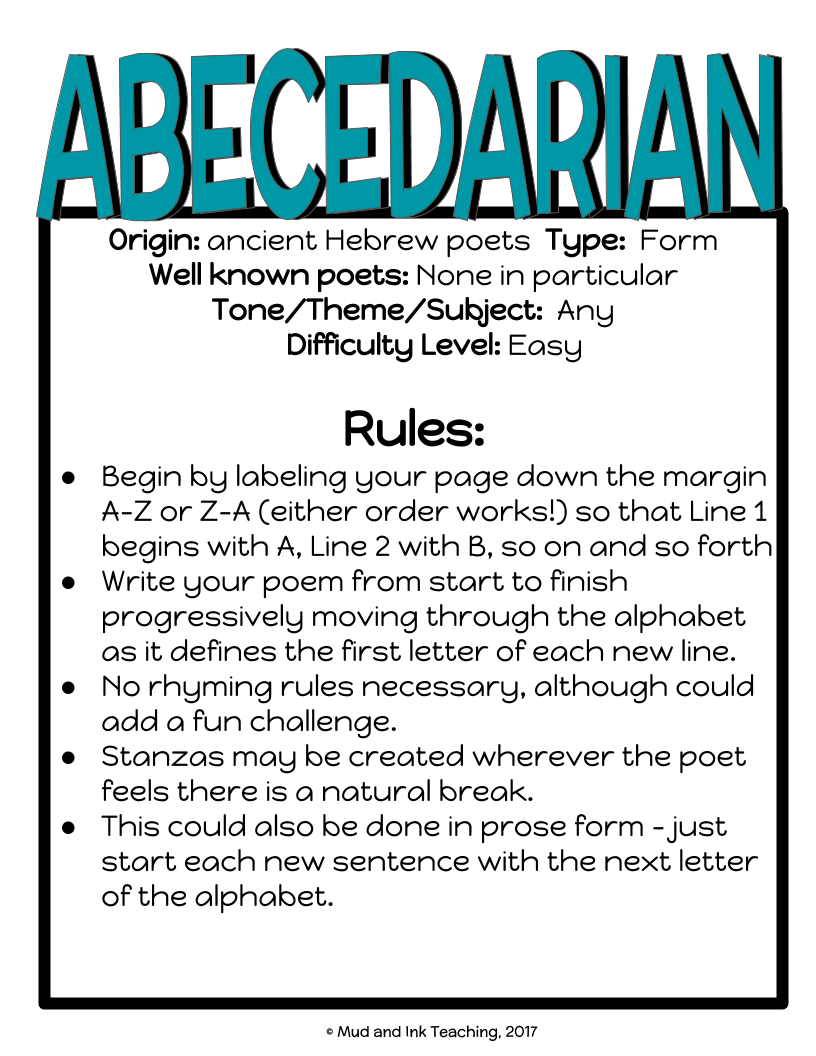
ADVENTUROUS TEACHING STARTS HERE.
Teaching the Poetry Mashup
If there is one thing that is constant among generations of teenagers, it is the love of music. And if there’s one thing that English teachers know, it’s that music is the perfect gateway to getting students into poetry. Today, I’d like to share an awesome poetry/music pairing to try in your own classroom: Carl Sandburg's “Chicago” meets Patrick Stump’s “This City is My City”. The Literary Maven has an incredible blog post out about poetry mashups (coming in April!) with lots of suggestions from other ELA teachers, but I wanted to share my mashup here in a bit more detail for you all.
Make sure to read to the end for your FREE LESSON DOWNLOAD!!
If there is one thing that is constant among generations of teenagers, it is the love of music. And if there’s one thing that English teachers know, it’s that music is the perfect gateway to getting students into poetry. Today, I’d like to share an awesome poetry/music pairing to try in your own classroom: Carl Sandburg’s “Chicago” meets Patrick Stump’s “This City is My City”. The Literary Maven has an incredible blog post out about poetry mashups (coming in April!) with lots of suggestions from other ELA teachers, but I wanted to share my mashup here in a bit more detail for you all.
My Glee Mash-up nickname for this lesson is “This City is My City of Broad Shoulders”. Clever, huh? I thought you’d like that. When you teach paired poetry, you’re asking something truly unique and rigorous of them: you’re asking them to consider similarities and differences across genres and often across huge time gaps in history. Asking your students how and why the pieces relate to one another, even just casually, is a beautiful exercise in critical thinking. But you can construct something more purposeful, too! I love the mashup of these two pieces and I’d like to discuss why these two pieces are so cool together.
Stump’s “This City” has lyrics that describe pride in a city despite its flaws and corruption and Sandburg does something very similar in his poem. Stump writes:
“From every high rise
Down to every slum
From every unethical politician to the wise old beat up bum
My city and I our hearts beat, beat, beat together
When I’m home we both breathe, breathe, breathe together
This place is my home, wherever I go, I, I, I, I, I take it with me”
and Sandburg writes:
“And they tell me you are crooked and I answer: yes, it is true I have seen the gunman kill and go free to kill again.
And they tell me you are brutal and my reply is: On the faces of women and children I have seen the marks of wanton hunger.
And having answered so I turn once more to those who sneer at this my city, and I give them back the sneer and say to them:
Come and show me another city with lifted head singing so proud to be alive and coarse and strong and cunning.”
These two voices, so distant in time and genre, have such a scrappy, unapologetic sense of pride for their cities. Both poets use a counter argument structure: they acknowledge the faults of their cities, then come right down and defend their homes. Stump identifies the “unethical politician” while Sandburg references having “seen the gunman kill and go free to kill again”. The reason I enjoy pairing these two together is because Stump’s version is so simple and approachable. His language is plain and the song is catchy, so it makes for a nice scaffold. Once you layer on “Chicago”, the language gets more difficult, but since you’re approaching it in the same context as “This City”, the students already have a frame for the poem.
As you look through these parallels with students (and there are several more!), I would suggest focusing in on four major aspects of the poems: the tone, the message, the speakers, and the figurative language. Depending on your class, you might even narrow that list down to just two things to focus on.
Wouldn’t this be a great opportunity for some close reading practice? I have a few ideas to share with you. Ready?
THREE WAYS TO ENGAGE STUDENTS WITH MASHUPS:
1. The Mashup Poem
Just like this blog post title, this activity asks students to combine the two works together into a unique poem of their own. Have you ever had students write a blackout poem? This concept is similar! Provide both the poem and the song to students printed out. Have students place the two pieces side by side. With a pen, highlighter or sharpie, have students read the poem as if they were blended together across the margins. For example, in the Sandburg/Stump Mashup, the first line would read: “This city is my city/Hog Butcher of the World”. As the students read across the two poems like this, they should use their writing utensil to underline the phrases they like the best and start blending their favorite parts together and eliminating some of the text as they go. By the time they’re done, everyone will have a unique poem even though they all started with the same two sets of text!
2. Compare/Contrast
For this lesson, I give students a regular ole’ venn diagram, but with a twist. This venn diagram is sectioned off into the four elements that we focused on an annotated as we were reading. To use this venn diagram, you could do stations, you could do a jigsaw, or you might even break students up into small groups and have them present what they found. I would suggest doing one of the sections together as a model and then assign the rest for small group work or homework (depending on their skill level). Encourage students to write direct lines (textual evidence) in the venn diagram as much as they can! They should avoid vague statements and summary as they work through the organizer.
3. Deeper Analysis
Once they’ve finished comparing and contrasting, now they can move on to some writing about their observations. For this next level part of the lesson, students will choose one element that they identified and defend how and why this similarity or difference is significant. For example, if the students identified the tone of “This City” as joyful and the tone of “Chicago” as empowered, students would then discuss how that ultimately impacts the message of each poem and makes them different from one another. This is the part of the lesson that higher level students should work on the most and younger, more inexperienced students should practice with you and be encouraged to try. Don’t skip this step -- it’s HARD, but it’s IMPORTANT!
What are some other mashups that you’d like to try? Let me know in the comments!
SHOP RESOURCES
Why We Travel With Our Baby
I can’t tell you how many people have said to me, “Oh now that you have a baby you won’t ever leave the house!” While leaving the house certainly takes a lot more thinking, planning, and packing, my husband and I made a decision long before our little man was born -- we were having a baby because we wanted to have a travel companion.
I can’t tell you how many people have said to me, “Oh now that you have a baby you won’t ever leave the house!” While leaving the house certainly takes a lot more thinking, planning, and packing, my husband and I made a decision long before our little man was born -- we were having a baby because we wanted to have a travel companion. We have adopted the paradigm that having a baby will definitely change how and when we travel, but it will also make our experiences even more exciting and fulfilling. Now, when we travel, we are traveling as a family. We will be making memories. We will be teaching, learning, growing, and bonding.
And that has already started. Hugo is five weeks old. And here’s how we stay motivated and inspired to maintain our active, travel and adventure loving lifestyle:
BE PATIENT
I have to admit, the first few weeks after Hugo was born, I lost all hope of ever traveling again. I quickly looked in the mirror and thought, you idiot! What a naive, crazy thing to believe! From the demands of breastfeeding and pumping, the unpredictable crying, sleeping, and waking hours of newborn life, I slipped into the camp of parents that had given up all hope of ever returning to a somewhat normal life.
But then my mom, my hero through this whole process, reminded me to be patient. To give myself grace and time. And so I did. And after a few deep breaths, I could relax again. Breastfeeding got easier. The demands of pumping felt less intense. Hugo’s schedule became a bit more predictable. Some days are really tough, but now it finally feels like most days are really pleasant and happy. I look at my boy and think, I can’t wait to take you camping!
START MAKING PLANS
This one is huge. Making travel plans for the future gives parents something to look forward to and it also gives parents time to start mentally preparing for the journey. Our first big trip is planned for Memorial Day: we plan to head up north to our some of our usual camping spots in the UP! In order to make that happen, we will be doing this next item on the list…
START SMALL
Practicing outings has been critical for us in the first five weeks! The first time I took Hugo out of the house on an outing, I was literally shaking and my heart was pounding in my chest. He was only one week old and my mom was staying with us. She was the one who convinced me that I could do it - that we would be JUST FINE. So, we fed him, bundled him up (yup...newborn in a Chicago winter is just the worst!), and got in the car. And I drove the car. With a baby inside. It was terrifying!!! But then we arrived at Babies-R-Us and he slept. And we got to Maggianos for lunch...and he slept. Then we walked around the mall...and he slept. Every ten seconds I was peeking under the car seat cover to make sure my baby was still alive...and he was. By the end of our outing, Hugo had slept almost four hours and my guts were so twisted I had diarrhea when we got home (okay not really, but I thought it would happen for sure!!).
The point is - we got out. And everything was okay. So we tried again and again. I went alone. I went with my husband. And every time we learn something new about being out with our baby. We’ve probably only had one or two bad outings, and we learned from them. Now, instead of being five weeks postpartum and terrified to take our baby out, we are five weeks postpartum with lots of practice, and even better, lots of confidence in what we are capable of doing with our little boy! As an added bonus, Hugo loves the car seat, loves the car, and is starting to realize that his parents aren’t slowing down anytime soon.
USE YOUR REGISTRY
Your baby shower is a great time to stock up on some helpful baby-travel items. Here are a few of the items that were recommended to me by other parents (some affiliate links included) and things we've already been using:
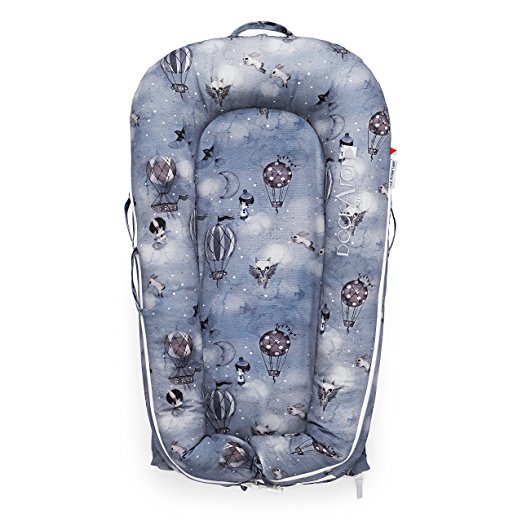
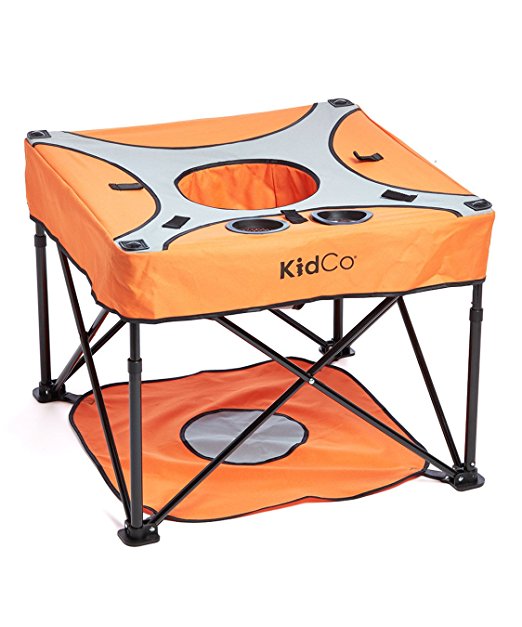
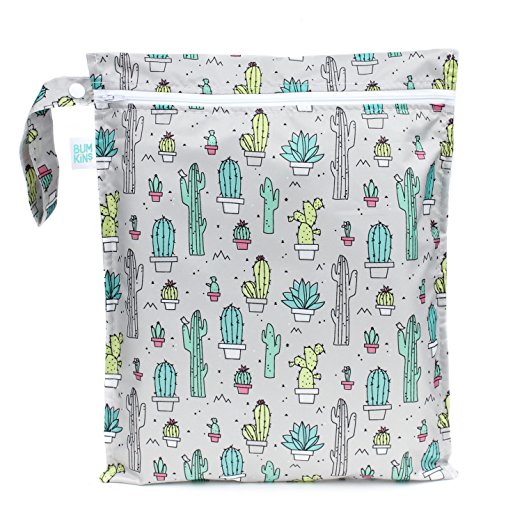

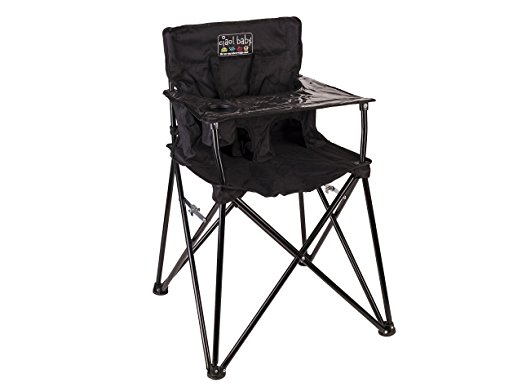
FOLLOW ROLE MODELS
My hubby and I stay inspired by following other travel-loving individuals, parents, and families. From the blogosphere to YouTube, there are so many amazing people out there sharing their travel stories! Here are a few accounts we have our eyes on right now!
Bloggers:
YouTubers
How do YOU roll?
I'd love to hear how you're making the most of travel with your little ones! Drop a comment below and share your favorite items, other travelers to follow online, or your own experience and advice!
Thanks for reading!
I'm Amanda: high school ELA teacher, passionate traveler, and mommy raising a bilingual baby. Read more about loving this crazy, beautiful adventure:
A Cell Phone Policy that Actually WORKS!
Every school and every teacher has a different philosophy with student cell phones, but with classroom management as a whole. Whether you are on the FORBIDDEN end of the spectrum or on the “do what you want, it’s your grade” end, I just might have a solution that will help in your classroom.
Every school and every teacher has a different philosophy with student cell phones and with classroom management as a whole. Whether you are on the FORBIDDEN end of the spectrum or on the “do what you want, it’s your grade” end, I just might have a solution that will help in your classroom. Setting clear expectations and routines around this policy during the first two weeks of school will take practice, but is critical to establish as it can easily be the number one classroom management problem you will face at the middle and high school level.
A Disclaimer
This post comes with a HUGE disclaimer: cell phone behavior is changing constantly and so is the way that teachers and administrators need to respond to this behavior. The suggestions in this blog post are tried and true, but that doesn’t mean that when you’re reading this, it might be something that’s not right for your situation. Officer Gomez, an SRO that speaks in-depth about discipline issues he faces in his position, argues strongly for full-banning practices in schools. The bullying, social-media addiction, and other unsafe exchanges that happen on cell phones need to be taken seriously - especially at the middle school level. School-wide policies that respect the best interest of student-learning and safety are the best situation, but for those of you facing a “handle it yourself” classroom situation, then I’m here to offer my story and my success.
The Cell Phone Charging Station
I’d first like to point out what I’ve named the policy - The Cell Phone Charging Station. It’s not “Phone Jail” or anything negatively connotated. The goal of using a charging station is to incentivize responsible behavior before punishment is even necessary. This is a lot like what I’ve learned to do as a parent. I know for a fact that my toddler’s mood between 4:30pm and 7:00pm is demonic…like unrecognizable, monster human status. Do I schedule playdates or haircuts during this time? HELL NO. I try to create situations that foster the kinds of outcomes that I desire long before I’m stuck handing out consequences, and this is critical for us in the classroom, too.
These are the kind of things that are so important when setting up your high school classroom: trust me, the Dollar Spot has its temptations, but if you don’t have FUNCTIONALITY in your classroom design, it won’t matter HOW sparkly that unicorn is. We must have a goal of creating a classroom environment that is safe, comfortable, and prime for academic success. Figuring that out needs to happen before anything else (and if you need help with that, I’m here for you).
Here’s what I tell the kiddos in the first week of school:
So here’s how cell phones work in our class: sometimes we need them to look something up quick, but most of the time, you know they’re a major distraction to your education. And that’s what you’re here for after all, right? Well, the bottom line here in this room is that I don’t want to see them out and being a distraction, but I also want you to learn how to control your own behaviors and be able to use them at appropriate times.
So here’s what we’re going to do: if you know that you can’t handle the distraction for the day, drop your phone off at the charging station. Plug it in, turn the ringer off, and just forget about it for the class period. You won’t even be tempted to look, plus, when class is over, you’ll probably be back to a full charge! For those of you who choose to take your chances and I have to ask you more than once to put your phones away, the second time I see the phone I’ll simply ask you to walk it over to the charging station since you couldn’t follow the first warning.
And that’s it. It’s that simple. From about day four, I had more students choosing to put their own phones at the station than I’ve ever had to reprimand. In the first semester of trying this system, I had one student (out of 125!) refuse to put his phone away and I was able to handle him separately.
A note: I’ve seen a lot of teachers have success with caddies in desk clusters, too.
The Benefits:
There will never be a perfect policy, but this approach certainly created a few things in my classroom:
An atmosphere of adult trust. Students are treated like adults with a choice, not children with rules (see class contract below)
An opportunity to self-assess and build self-monitoring skills. By putting the responsibility on them for knowing their own habits, I hope to be building a behavior that will strengthen over time and into their adulthood.
A community of caring. The tone of our room is one where we care about each other and care about learning - I don’t spend day after day nagging students about this annoying behavior!
Want to see my complete first two weeks of school plans? I’m here to walk you through step by step in my course:
The Setup:
Here’s what you’ll need to create your Cell Phone Charging Station:
A visible place at the front of the room. I have mine on the front board so that I can always see who is up there and keep an eye on any funny business.
A clear shoe hanger. I bought mine on Amazon for about $8.
A power strip that has USB ports. I bought mine on Amazon and this one has room for 14 devices to be plugged in at once. I never have this many at once, so it’s worked out great! Students do have to have their own cord in order to plug in - but most of them live with a plethora of cords in their backpacks so that hasn’t been a problem either.
A few dry erase markers. I ask the students to put their name on the pocket where their phones are so that there are no mix-ups or if they leave and forget the phone I know who it belongs to.
A sign or place on the whiteboard for you to write your rules for using the station.
I’d love to hear how this has helped in your classroom and how you tweaked it to fit your school. Establishing this as a routine in my classroom has become an essential part of the first two weeks of the school year. We need to practice this routine and actually test it in action a few times before we get it down. This is also a cornerstone component of the class contract that we sign together at the start of the year. I’d love to share a copy of the contract with you — feel free to adapt and change for your needs!
LINKS TO PRODUCTS
(some may be affiliate links which means I will be partially compensated for your purchase)
Six Ways to Create Warmth in your December Classroom (and still take care of business!)
There’s a lot more to teaching in the month of December than just cute holiday sentiments. This time of year is challenging for so many reasons; from the looming horror of final exams to the downright awful cold weather (remember, Chicago girl here!), December is a teaching challenge of focus, measuring learning from the entire semester, and finding ways to authentically remember the heart of the season in our classrooms.
This month, I've taken on the challenge to be part of the 12 Days of December Blog Hop and Giveaway! I teamed up with some incredible secondary teachers to write about "comfort and joy" during the holiday season in our classrooms.
When I think of “comfort and joy” in my classroom around December, what I look forward to most is getting my YouTube fireplace crackling on the screen at the front of my room!
This one comes with Christmas music:
And this one just crackles:
But as we all know, there’s a lot more to teaching in the month of December than just cute holiday sentiments. This time of year is challenging for so many reasons; from the looming horror of final exams to the downright awful cold weather (remember, Chicago girl here!), December is a teaching challenge of focus, measuring learning from the entire semester, and finding ways to authentically remember the heart of the season in our classrooms.
Here are SIX ways I tackle the challenges of this tricky teaching month (and keep things warm and cozy, too!):
1: Plan a White Elephant Holiday Party!
If you’re like me, you’ve been saying “no” to class parties all semester. This is the one time of year that I give in! We usually have an awkward calendar day right at the end of the semester, and so I seize this opportunity to let the kids have a party. And not just a sit around, eat, and stare at each other party...a White Elephant Party! By having a specific kind of gift exchange, it keeps the class moderately sane (students have to pay attention in order to play the game!) and keeps any socially awkward classes from getting too...socially awkward!
2: Fun, but meaningful, end of semester review for finals
You’ve covered so much material since August, and finals are right around the corner. As much as we’d like to just wrap things up and be done, students are going to be anxious about their final grades and getting prepared for their exams. In the English classroom, there are TONS of fun, warm, and joyful ways to do this! Consider:
Create Character Stockings: In this easy “craftivity”, students choose a character of significance from the semester and design a stocking that fully represents him or her. The stocking should include both textual evidence and symbolic imagery that encapsulates that character’s most important contributions to the work of literature. Have students give brief “presentations” of the stocking before you hang them up by the fireplace in your classroom. This will serve as both a review of important character moments and a speaking and listening grade before the end of the term!
Try a new techy review game that you haven’t had time to play this semester. Platforms like Kahoot!, Quizziz, and Quizlet Live are easy to use and energy boosters during the winter blues.
3: Thematic, argumentative writing
Some of you might not have finals until after winter break. This means that you have to fill all of December with meaningful, rigorous work to keep your kiddos from going bananas. Why not try out this mini-unit in argumentative writing? Pose the question: do the holidays make people more generous or greedy? Then, using the lesson plan, send students off to search through ten different articles and videos looking for evidence to support each side of the argument. After a few days of reading and notetaking, challenge the students to write an essay taking a side embedding and using the evidence they’ve found from the provided nonfiction resources. This could easily take you anywhere from two to six class periods and is sure to keep them both academically focused but also enjoying some humor and seasonally related discussions.
4: A Decor Update
This is a great time of year to warm up your room with a few simple decor ideas. Have you seen some of these before?
I LOVE these Winter Literary Device Posters from Ashley Bible of B’s Book Love. I have her nature-themed ones and love those too! These are the perfect wintery touch for any ELA teacher’s classroom.
Turn your classroom library full of books into a tree!
Make a classroom fireplace! Check out this tutorial from Little Running Teacher in the Philippines. It brightens and warms her classroom right up!
5: Service Learning Project and/or Field Trip
If you have some time to spare and need to fill it with something meaningful, this is a great time of year to start a service learning project or take a service learning field trip! I have a great way to get started on a project with Be the Change! Thinking about a field trip instead? How about taking your crew to Feed My Starving Children? This organization is perfectly set up for school trips, they spend time educating students about what they’re doing and why, and they make the volunteering time a blast!
6: Random Acts of Kindness Challenge
To really get into the spirit of joy and giving, why not challenge your students to complete this Random Acts of Kindness Challenge? Have students work together as a class and use a class hashtag to share photos on Twitter or Instagram completing each challenge. Take all of those pictures and throw them into an Animoto video to show at your White Elephant party! This free download is editable and ready for you completely customize for your own students and school.
Don't forget to check out all of the other amazing secondary bloggers sharing their ideas for creating comfort and joy in your classroom all winter long and be SURE that you enter our amazing giveaway! We are raffling off gift cards on December 1st, 4th, 8th, and 12th, so be sure to enter early and often to get your shot at some seriously crazy prizes!
Project Based Learning in the Secondary ELA Classroom
When teachers hear the term PBL (Project/Problem Based Learning), too many envision a science or math classroom. STEM focused courses are not the only courses where PBL is both important AND successful. Taking real world, authentic problems and putting them in the hands of students to investigate and solve belongs in EVERY discipline! Today, we'll take a look at how PBL can take shape in the English Language Arts classroom.
When teachers hear the term PBL (Project/Problem Based Learning), too many envision a science or math classroom. STEM focused courses are not the only courses where PBL is both important AND successful. Taking real world, authentic problems and putting them in the hands of students to investigate and solve belongs in EVERY discipline! Today, we'll take a look at how PBL can take shape in the English Language Arts classroom.
Project Based Learning: It All Starts with a Question
What makes PBL and ELA such a seamless fit is in one core principal: they're both inquiry driven. In our ELA classes, we're always asking students to ask questions and to dig to find the answers. The same notion goes for PBL. Once you find a place in your curriculum that you want student questions to drive the learning, you've found a place for a PBL assignment or unit.
Here are a few ideas to get started...
Fiction PBL
This type of project is fun, but there's not too many other teachers out there on the internet writing about it, so you'll have to bear with my example here as I don't have others to show you. When we think of a Fiction PBL, we are thinking about teaching a specific novel and making the problem in the novel something for students to extract and solve in real-life. So, for example, if you teach The Hunger Games, one of the core problems in the novel is the way the government creates and produces propaganda through media channels to maintain it's power and keep their citizens afraid and only informed with "approved" messages. To create something PBL, you would need to find the real-world connection. Immediately, I think about some of the Trump-era restrictions on media, the banning of certain media outlets during the campaign, and the circling accusations of "fake news". Here is an opportunity for a teacher to ask a driving question: to what extent is freedom of the press necessary? Students could investigate the history of the media, how media outlets and censorship function in other countries, etc. This would be a Fiction PBL opportunity.
Nonfiction PBL
A Nonfiction PBL would work very similarly to the Fiction PBL, but perhaps with a bit more flexibility. Teachers would select the nonfiction work and then design the PBL around that text. Teachers have done this with Carole Dweck's Mindset - can you imagine? Students researching and investigating about their own mindset? I've also seen it in classrooms using Malcom Gladwell books, Sean Covey's The Seven Habits of Highly Effective People, and more. You might even consider a memoir to start of a PBL experience. Other teachers have even used the structure of Lit Circles (small groups of students read different books) as a place to start a PBL experience for students.
Service Learning/Research PBL
Perhaps my favorite way of using PBL is to combine the Genius Hour idea of passion project into the PBL world by having students choose a social justice topic that they feel passionatley about and sending them off to do extensive research about the topic. At our school, the students first learn about the topic through research and reading two choice nonfiction books on the topic, they write a proposal and an annotated bibliography, they share what they're learned on social media, they go out into they community and find a way to give back to help their cause, and then finally, they present their findings at a huge community gathering at the end of the school year. I have this entire project for sale in my store if you're interested in checking it out!
In the meantime, you should definitley check out Kayla Delzer's TedTalk on Reimagining Classrooms! Her perspective is spot on!
For more ideas and training on implementing PBL in your English Language Arts classroom, enroll in Mud and Ink Teaching's online course and bring the power of PBL to your school.
EASY Grading with Macros in Google Docs
Macros are little shortcuts that you give to your computer. When you’re inside a Google doc, simply click “Tools” and then “Preferences”. Here, you’ll see the macros shortcuts that are already set up. For example, when you type ( C ) without spaces, your computer will automatically change it to the copyright symbol © . We want to make these shortcuts work for us as graders!
This is by far the least sexy title I’ve ever given to a blog post, but that’s exactly what I’m going to talk about: an unsexy name for a very efficient and amazing shortcut you can use while doing your online grading and commenting.
We’re going to skip a few steps here: I’m not going to address collecting work through Google Classroom (that post is for another day or someone else already wrote it) and I’m not going to address Doctopus of Goobric (but I will -- eventually!). We’re just going to assume right now that you have a class set of assignments on your Google Drive. You’re staring at them and thinking holy crap...this is so much work. I’m also going to assume you have a rubric ready to go. So let’s start grading.
What are MACROS?
Macros are little shortcuts that you give to your computer. When you’re inside a Google doc, simply click “Tools” and then “Preferences”. Here, you’ll see the macros shortcuts that are already set up. For example, when you type ( C ) without spaces, your computer will automatically change it to the copyright symbol © . We want to make these shortcuts work for us as graders!
What are the common errors?
Many teachers find that as they grade and as they comment they keep writing the same things over and over again. This is exactly what macros should help you do more quickly. If I’m grading an essay in English, the one biggest error I see at the beginning of the year is students giving shallow analysis of evidence they’ve included. So, instead of writing “After you use evidence, make sure the analysis is deep and explanatory. SHOW me how this evidence is relevant and important!”, I could just set up my macros to be “WA” (and I know that means “weak analysis”). Now, every time I type “WA” my computer will recognize that code and change my text to the full two sentence comment that I really wanted to make.
Getting started!
It’s really that simple! You’ll want to get started by making a list for yourself of the codes that you want to use and the text that they’ll be replaced with. Make this cheat sheet, then go and insert them in your preferences, and finally print out a copy for yourself. Eventually, after using it enough, you’ll memorize your codes, but for the beginning, you’ll want a cheat sheet to look off of.
Share in the comments below: what codes are you using for your subject area? What is working for you so far?
I'm Amanda: high school ELA teacher, passionate traveler, and mommy raising a bilingual baby. Read more about loving this crazy, beautiful adventure:
shop resources
Back to School: Tech Talk Week!
It's time to head back to school with The Secondary Series! We are so excited to share a whole entire week of broadcasting with you all. This Back to School: Tech Talk Week series will focus entirely on edtech tips and tricks for any secondary educator to bring back into his or her classroom.
It's time to head back to school with The Secondary Series! We are so excited to share a whole entire week of broadcasting with you all. This Back to School: Tech Talk Week series will focus entirely on edtech tips and tricks for any secondary educator to bring back into his or her classroom.
Why watch?
You mean, you need another reason other than exceptionally fun and free professional development? Well, we're offering out TWO TpT $50 gift cards to our viewers as well as printable certificates for professional development. Depending on your state and district, you may be able to use these certificates to redeem toward your certification (you'll have to ask your supervisor about this, but we'll hand over the proof that you were trained!).
Where do I go?
Join us in our Secondary Series Facebook group every night the week of July 30th - August 5th from 7:00pm - 7:30pm CST. We will broadcast there LIVE, but you can always catch the replays there in the group by clicking on the tab VIDEOS. Here's a look at the lineup:
Sunday July 30th:
7:00pm - Kick Off! Meet your Teacher-Broadcasters
Module 1 @ 7:20pm - 6 Ways to Use Snapchat in Your Classroom with Amanda C.
Monday July 31st:
Module 2 @ 7:00pm - Grading with Macros in Google Docs with Amanda C.
Module 3 @ 7:10pm - Make Using Multiple Sites Painless: One Tab with April C.
Module 4 @ 7:20pm - EdPuzzle with April C.
Tuesday August 1st:
Module 5 @ 7:00pm - Sli.do with April C.
Module 6 @ 7:10pm - Zip Grade with April C.
Module 7 @ 7:20pm - Prezi with Kim C.
Wednesday August 2nd:
Module 8 7:00pm - Autocrat with Tziri L
Module 9 @ 7:20pm - Google Suite/Classroom with Erin C.
Thursday August 3rd:
Module 10 @ 7:00pm - Canva with Meredith D.
Module 11 @ 7:10pm - Quizizz with Tziri L.
Module 12 @ 7:20pm - StoryBoardThat with Kim C.
Friday August 4th:
Module 13 @ 7:00pm - Legend with Kim J.
Module 14 @ 7:10pm - Spark Video with Kim J.
Saturday August 5th:
Module 15 @ 7:00pm - PowToon in the Classroom with Amanda W.
7:10pm - Gift Card Winner Announced!
Enter our TpT Gift Card Raffle and Qualify for Your PD Certificate!
For every broadcast that you attend, you'll be eligible to enter our raffle AND qualify for a PD certificate. All you need to do is tune in, listen for the EXIT TICKET question, and respond to the question here. The raffle will take place on August 5th 2017 (the last day of broadcasts), so entries after that date will not be eligible for the gift card. You may, however, continue to respond to exit ticket questions to qualify for your PD certificate up until September 5th. After September 5th, no more entries will be accepted.
6 Ways to Use Snapchat in the Classroom
I’m a teacher in my 30s, so I’m by no means a “Snapchat native”. I actually grew up with card catalogs, Dewey Decimals, and World Book Encyclopedias, so no excuses here teachers! You can learn ANYTHING! And before you write off Snapchat thinking social media does not belong in the classroom, try to see if there’s value here for your classroom, no matter how intimidating it might feel! Plus, you'll probably have a lot of fun along the way :-)
*If you need to know the basic ins and outs of Snapchat first, check out YouTube for some great tutorials for beginners! You do not need to be a Snapchat expert to use it in your classroom - most of your students already ARE experts! Let them teach YOU what you don’t know, and I’ll try to provide the rest here in this post!
I’m a teacher in my 30s, so I’m by no means a “Snapchat native”. I actually grew up with card catalogs, Dewey Decimals, and World Book Encyclopedias, so no excuses here teachers! You can learn ANYTHING! And before you write off Snapchat thinking social media does not belong in the classroom, try to see if there’s value here for your classroom, no matter how intimidating it might feel! Plus, you'll probably have a lot of fun along the way :-)
Why Snapchat?
Before we get too far into this post and tutorial, I want to be very clear that there are good times and bad times to use social media in the classroom, so use these tips at your own discretion. Snapchat hasn’t replaced any part of my classroom, but it sure has enhanced lessons and homework assignments!
How do you use Snapchat in the classroom?
Snapchat is mostly known for its social aspects, but that’s actually not how I use it most often. What I like about Snapchat is the ability to adapt, modify, and play with images. Essentially, Snapchat allows you to pull up an image (or take a picture), then annotate that picture with stickers, highlighting, doodles, and text. There are other apps that do this, too, so if you’re not comfortable with Snapchat, let me know in the comments and I can make other suggestions. You can also do most of these activities using Google drawings if your students have Chromebooks and you’d prefer not to use Snapchat. I use Snapchat because my beginning of the year survey tells me that about 98% of my students are on it actively!
The basic steps to use Snapchat in the list below follow this pattern:
Decide on an image or picture that you want students to work with. This could be a picture of a page in a book, a selfie (reaction to learning), a picture of a student handout, etc.
Either YOU provide the picture for students to download (you can post the picture on Classroom and students can save it to their phones) or direct the students to take a picture of something (a math problem in their text book).
Open the Snapchat app and select that image from the camera roll.
Now, students can annotate the image however you want them to (highlight, sticker, text, underline, etc.)
Finally, students save the image to their camera roll (no need for them to share it socially on their stories) and then submit that image to you in a variety of different ways.
Are you starting to see the vision? Let’s get started! Here are the 6 ways to use it in the classroom!
Download a FREE Checklist of these 6 Tips!
1. #BookSnaps
This was actually my first introduction to using Snapchat in the classroom. My great friend Tziri Lamm shared about #BookSnaps in a Facebook group and I knew I just had to try them! Think of #BookSnaps as a new and updated way of assigning annotation for homework. Students in ANY subject can take a picture of their reading, react to it, and submit that annotation back to you easily and with a lot more engagement than standard annotating practices. Check out creator Tara Martin’s website about how students across the world are reading, snapping, annotating, learning, AND sharing socially!
2. Book Talks
Similar to BookSnaps, Snapchat also allows users to record ten second videos. Give students your criteria (why you chose the book, the best part, your favorite character, your rating/recommendation), and have them record a ten second video for each of the criteria. Students could record themselves or possibly parts of the book or any other setting that appropriately matches what they’re talking about. To turn in, students would save each video to their camera roll and then you could either teach them how to edit the four smaller videos together OR for a really low-tech option, have the students insert the videos into a Google slide. When you hit present, you’ll be able to watch each video! If you’re a librarian, you might have everyone in a class do a ten second book talk and then compile them all together for a 260 second video (depending on how many students, obviously!) of all the books read by an entire class (Check out Nikki D Robinson’s website for ideas)! There are lots of options and they’re all pretty low-tech!
3. Writing Stories
This idea is similar to Book Talks. If you’re not a reading teacher (or someone who would be having students do Book Talks), students could easily emulate the same process as described above, but with a different topic. Maybe you want students to explain a process in math or science or even demonstrate a physical skill in PE - whatever the case may be, students could make quick ten second videos and then either stitch them together in video editing software or submit via a Google slide. It’s engaging for them, requires mastery (for the most part), and is easy to collect and grade. That’s a win!
4. Raise Awareness
In my class, we do a massive service learning project called Challenge to Change. One of the things students need to do as part of their giving back to the community is to raise awareness and educate others about their social justice issue. Using Snapchat, students were able to create and build stories to share socially and raise awareness amongst their peers on topics ranging from homelessness to bullying. Using Snapchat, students could also track their engagement with their audience by reporting back how many VIEWS their story got. If their story wasn’t viewed as many times as they set a goal for, this could encourage a conversation about the QUALITY of the story and prompt revision. Yes, I know, win, win, WIN!!
5. Vocabulary Practice
Every high school teacher has a responsibility to explicitly teach vocabulary. Yep, I said it. Every single one of us. Every content area has a specialized vocabulary that desperately needs to be taught to our students, so why not do it with Snapchat? Students could take a picture of a “scene” or moment that depicts one of their vocabulary words. Students could take pictures of seeing the word used authentically in the world OR a video of some friends using it in a conversation. Combine all of the snaps from your class into a Google Slideshow and distribute to everyone for studying purposes.
6. Revision
One of the most important things I’ve been learning as a veteran teacher is finding more and more ways for learning to continue. One of these important classroom habits is that of revision. I try to instill in my students the value of learning and that it never ends: just because you’ve been tested or written a paper, that doesn’t mean you’re done learning. We make learning cyclical and important to revisit using revision. Using Snapchat, we’ve had students:
Take a picture of their grammar error, mark it with the “pen” function, then write the correction in the text box and submit
Take a picture of their old quiz, then type their revised answer in the text box and submit
During peer review, students will “snap” pics of their favorite lines or moments in a partner’s paper. We share the highlights with one another as we look for ways to improve.
For reflection, students take a picture of a moment they’re proud of and comment about why they felt successful in that moment (in an essay or on a test)
While it sounds like taking pictures of exams and essays would encourage cheating or copying, we’ve had the opposite experience. We’ve seen that most students (there are always a few that push the limits!) value the authentic feedback experience that comes with using Snapchat and their revisions.
Getting Started!
Start small. Teach yourself Snapchat (its really not hard!) and play around. Maybe make an account and share it only with a trusted friend so you can try it out and make mistakes. Then, choose one simple tool and give it a shot. Lay the groundwork for your expected behaviors (just like with all other technology) and try one thing. If it doesn’t work for you right away, that’s okay! Trying new things is what makes us all #adventuousteachers and that’s an attitude and mindset that students and colleagues respect.
If you find a technique and are feeling really successful, be sure to snap a picture and post it on Instagram using #edtechteacher! Every month, the #edtechteacher crew gives away $100 to a teacher using technology in innovative ways in his or her classroom - let’s see what you’re up to!
Secrets of an English Teacher: I Don't Have a Classroom Library
It’s true. I confess: I am a high school English teacher and I do not have an operational classroom library. Do I have a classroom full of books and do I grab whatever I can at Goodwill and garage sales? Heck yes. But do I have a check out system, or even an organized system in which I’ve read every book on the shelf and make a point to recommend titles to each of my 125 students every other week? Nope. I don’t.
It’s true.
I confess: I am a high school English teacher and I do not have an operational classroom library. Even more scandalous? I don't think that giving students choice reading is the most important part of my curriculum (gasp!).
Do I have a classroom full of books and do I grab whatever I can at Goodwill and garage sales? Heck yes. But do I have a check out system, or even an organized system in which I’ve read every book on the shelf and make a point to recommend titles to each of my 125 students every other week? Nope. I don’t.
And I certainly don’t think it’s wrong to have these things, but after posting my confession in a Facebook thread last night, I faced and read quite a bit of retaliation to the notion that my high school English classroom is not equipped with a library. A few thoughts:
We have a fantastic school library and librarian.
So this conversation would be pretty different if this wasn’t the case. Our librarian is a voracious reader and is constantly fighting for funding and purchasing new books (even ebooks and audiobooks!) for our school. She sponsors our school’s book club. She comes into anyone’s classroom for a book talk ANYTIME THEY WANT. She will sit with individual students to get to know them and recommend the right book. English teachers have a lot of things to do and to provide for their students: with these resources just one floor beneath my classroom, I’ve learned to let the experts be the experts (in YA literature, specifically).
I can’t stand most YA literature.
For myself or for my students. Seriously! The idea that the English teacher should be constantly reading YA literature to purchase for the classroom library and then recommend to high school students is preposterous to me. If YA lit is the developmentally appropriate choice for a particular student, I consult with my incredible librarian (see above), with Goodreads, YouTube, and even social media. Rather than me reading dozens of YA books, I try to teach the students how to find books that will best suit them. I show them these sites, introduce them to the right people, and have them talk to each other. What I spend my time reading and recommending to students are things that will challenge them: I send students to documentaries on Netflix and YouTube, I help them download free podcasts on iTunes, I print off articles from The Atlantic and sometimes even The New Yorker. I find texts (not just novels) that a kid would never have found on his or her own. By the time students have reached my classroom, they are 15 and 16 years old. For many of them, YA literature is a bridge that leads backward: protagonists tend to be just a little too young and the writing just a little too easy. While I would never tell a student not to read a YA book, I’m just not putting it at the top of MY huge teacher to-do-list. Students will find great YA books, but I don’t think they’ll find a Malcom Gladwell podcast just by chance.
A literacy-rich environment ≠ a classroom library.
It seems like this was thrown around a lot in defense of teachers having individual libraries: “Students need a literacy-rich environment!”. Absolutely! But that goes way beyond a collection of books on a bookshelf! That means poetry and word walls, inspirational authors photos and maps of the world. “Print-rich” and “literacy-rich” are completely achievable even if a teacher chooses not to maintain a classroom library or “reading-nook”, at least at the high school level.
Choice reading is not a priority in my classroom.
I know: another mortal sin confessed by an English teacher. Trust me, I’ve read tons about choice. I love Gallagher and Atwell and the other experts out there, but after years of experience in my school with my 10th graders, I’ve decided that year-long independent reading is not what’s most important in my classroom. Our focus is on an inquiry-driven, well-rounded language arts experience. Each of our units is shaped by an essential question and then within the unit, texts are selected (some by the teachers, some by the students) to help students enter into discussion of this question based on their reading experiences. During the year, we do whole-class novels (see below for more on that!), a debate unit (reading lots of research), poetry, literature circles, a service learning project, Shakespeare and independent reading. Choice reading drives two of these units (the lit circles and our service learning project), but our school year is anchored by common experiences and a curriculum written by the teachers. For me and my team, we are constantly weighing the needs of our students and the urgency of college being only two years away. College reading is not choice reading and it’s certainly not always interesting. If students are only reading high-interest novels or the novels that they want to read, how are they going to handle their first college packet of articles? Probably like this:
Panic
A trip to Walgreens to buy more highlighters
Skimming
Panic
Reading the bold titles
A first attempt
Frustration
Quitting
If a student's entire literature experience is driven by choice and personal preference, I’m not sure we’re raising the kind of generation that will succeed in problem-solving or critical thinking. Choice should certainly be used as motivation and as a way of supporting struggling readers, but the average high school sophomore (in my experience) needs more than choice and independent reading time.
I still believe in the whole-class novel.
Passionately. But I understand that when you hear whole-class novel, you’re probably picturing what your own experience was in high school: reading quizzes, lists of discussion questions, annotating homework, and a chapter by chapter pacing calendar. That’s not what it looks like in most high school classrooms anymore! Let me take you through the first unit of my school year:
Unit 1: To What Extent is America a Dystopia?
Each of our units is framed by an essential question and since we wanted to focus the beginning of the year on dystopia, we crafted this question. An essential question gives the curriculum a frame and a lens for the students to work from. While the students didn’t “choose” the question, we, the teaching team wrote the question and chose the genre because of its popularity in YA fiction, in film, and in its eerie and disturbing current events connections. From this question, we then select the texts. These shift and get updated every year, but this year in a 9-week unit, students will read/watch/hear:
“Harrison Bergeron” by Kurt Vonnegut
“The Ones Who Walk Away from Omelas” by Ursula K. LeGuin
“The Pedestrian” by Ray Bradbury
“There Will Come Soft Rains” by Ray Bradbury
“The Lottery” by Shirley Jackson
“The Semplica-Girl Diaries” by George Saunders (published in The New Yorker October 15, 2012 issue)
Fahrenheit 451 by Ray Bradbury
Limetown (a radio-drama via Two-Up Productions)
Video (extended clips) from Wall-E, Elysium, The Hunger Games, and “Sight”
If you’re familiar with even just a few texts on this list, you’ll recognize how amazingly rich AND high interest this reading list is! Also, this list doesn’t include any of the current event news articles that we will pull as the unit is actually happening - I’m pretty positive there will be some engaging stories about North Korea, President Trump, Russia, and other dystopian-esque realities on the horizon for the fall of 2017. So, no, we won’t be choosing what we read, but on this list is a text and an opportunity for readers at all different levels. Fahrenheit 451 is the core text of the unit, but as you can see, students will have the opportunity to learn about our essential question from a huge variety of angles. Assessments for the unit include a socratic seminar, a synthesis essay, and a sprinkling of odd-one-out quizzes. Variety, intensity, depth, and critical thinking how we want our curriculum to be shaped so that students at all levels feel challenged and come to understand their own worlds in a brand new light. If you’re interested in further reading, Kristin Bowers elegantly defends whole-class novels in her blog post: In defense of the whole-class novel as does teacher-author Tracee Orman in her post Defending the Whole-Class Novel.
Caring, passionate, and professional teaching is what counts.
No matter your stance on choice reading vs whole-class novel reading, or any other education debate for that matter, the most important thing I keep hearing all around Facebook are the voices of educators who genuinely care not only about their students, but about their own professional development. Strong opinions about reading means that we have established a vibrant community of teachers that are talking and listening to one another and reading about our profession. This, above all, is what I’m most proud of in the online teacher community. But we must be careful to not be martyrs and to not qualify what "good" or "bad" teachers are based on the contents of their physical classroom space.
After ten years of teaching my population at my school, I can only offer a perspective from my experiences. What I’ve come to stand by is a goal to continually provide opportunities for students to be in conversation about what they are reading and what they are thinking. Yes, I would love for my students to be life-long readers and devour book after book, but realistically and more importantly I want them to be life-long thinkers. Critical thinkers. Critical voters. Through inquiry-based units, a wide variety of challenging texts, I’ve seen great success - it hasn't been a necessity for me to maintain a full-on classroom library to create powerful and important reading experiences for students, and for the new teachers out there who are seeing this all over Pinterest and Instagram, it can be pretty daunting. For teachers reading YA books all summer long and performing the role of teacher and librarian at your schools (so many of which I know don’t have the resources we do), my hat is off to you. Keep doing what you’re doing - I admire you! And for those of you out there feeling like failures for not having a classroom library or a huge stash of books to share with kiddos, worry not. Grab your favorites from home, maybe take one trip to Goodwill, and feel good about a small collection in your room somewhere. There are so many ways to challenge and connect with kids over literature. Keep researching, keep talking, and keep loving what you do. Our kids need every single one of you.
If you are looking for resources to help you teach a dystopian literature unit, you might like An Introduction to Dystopia:
If you want to learn more about Essential Question based curriculum design, check out Teach Box:
Go Back to School with Mud and Ink Teaching: Live Events, Giveaways and MORE!
Are you ready for Back to School season?!
It's already here, so if you're feeling overwhelmed and underprepared, focus on what's most important - professional development and thinking about curriculum. Here's what Mud and Ink has for YOU this August!
July 30 - August 5: Tech Talk Week
The teachers of The Secondary Series are so excited to bring you a week of shows all dedicated to technology in the classroom. From July 30 - August 5th, tune in from 7:00pm CST - 7:30pm CST for one whole week of great content! Our shows will resemble a TedTalk - quick, focused tutorials and idea-focused solutions for you to take into your classroom right away. We're going to have SO MUCH FUN (obviously) chatting with you LIVE! During the week, we will be offering certificates for PD credit (tune in for more info on that) and chances to enter our giveaway of $100 to Teachers Pay Teachers! The first live show starts Sunday June 30th at 7pm CST!
Join our Secondary Series group on Facebook to have access to shows
Respond to our Event for reminders and updates
Check out our Calendar for more detailed information
Adventurous Teaching Academy: GRAND OPENING!
As I've been working with teachers over the last ten years, I've started to notice that like-minded teachers not only like to be together in community, but inspire one another and encourage one another to be more and more courageous in their teaching every single day. So, this summer, I've developed the Adventurous Teaching Academy: a place for teachers who like to be challenged and want to try new things in their classrooms can come together, take courses online, make new friends, and find inspiration to keep moving forward as an #adventurousteacher. Sadly, many teachers are so burnt out already they're just looking to copy a worksheet. But I know that's not you. You are an #adventurousteacher, and I invite you to find out exactly how special that is and how we're going to make a huge difference in the lives of all our students this year.
August 1st - 15th: ELA LIVE!
Another group of incredibly hard working teachers have been collaborating all summer long on another live series for you - this time, each and every show is content focused for ELA teachers! Join broadcasters each night as they share their ELA expertise on Facebook Live from their individual channels. For a sneak peek at the lineup, check below! I'm excited to kick things off on August 1st sharing all about Project Based Learning in the ELA Classroom.
How to Work with Words Without a Workbook
In order for our students to succeed across subject areas, we must all acknowledge the critical importance of vocabulary instruction. There are so many best practices out there, so many specialists, and so many approaches, it can feel daunting to choose a streamlined and effective strategy for your classroom. No matter your favorite method or style, I have a thoughtful yet efficient strategy for you to try in your class this year.
How to Teach Vocabulary Effectively and Efficiently at the High School Level
In order for our students to succeed across subject areas, we must all acknowledge the critical importance of vocabulary instruction. There are so many best practices out there, so many specialists, and so many approaches, it can feel daunting to choose a streamlined and effective strategy for your classroom. No matter your favorite method or style, I have a thoughtful yet efficient strategy for you to try in your class this year.
Let’s start with the routine: bell work. Most high school teachers have seen the merits of implementing bell work and I’d argue that this is the best and most consistent way to have daily vocabulary practice without having to give up tons of class time. When the bell rings, you need something that students can do independently, quietly, and quickly. Why not have them try using the Vocabulary Digital Interactive Notebook?
Here’s how it works: you provide students with your list of words at the beginning of the unit. Then, daily, students take out their 1:1 devices (should be Google-ready), open their Vocabulary Digital Interactive Notebooks, they choose a vocabulary activity (there are eight of ‘em pre-loaded), they work on the selected activity for 4-5 minutes, and then you’re ready to move on with the rest of class!
Here’s how to get started:
1. Create your Vocabulary Units
The first thing you’ll need to do is decide on your word lists. Some of you may already have pre-selected words for your units, and others of you might have more flexibility, but either way, you are the one responsible for deciding on the words and the length of each unit. When you’ve got your word lists ready to go, we can introduce the Vocabulary Digital Interactive Notebook!
2. Train Students on the Routine
To use this notebook effectively, students should be trained on the bell work routine that you have determined to be the most efficient. In my room, that means when the bell rings, students are in their seats with Chromebooks open. At the front of the room, I display (from my computer) whatever specific directions I have for the day and the students know to check there and then begin. They open up their Vocabulary Digital Interactive Notebooks, follow the directions, and in 4-6 minutes, they’re done with that day’s vocabulary practice.
3. Model and Practice Each Activity (and add your own!)
Inside the notebook, you’ll find eight different practice activities for students to use with one or multiple words from the word list. At the beginning of the year (or when you implement this activity) it’s critical that you model and practice each of the graphic organizers and activities in the notebook. Oftentimes, during Unit 1, teachers spend time teaching each of the activities one by one before making the bell ringers and independent activity in Unit 2. Don’t forget: since this notebook is completely editable, you can add any of your other favorite quick vocabulary activities that you want before you assign it to the students!
4. Add Your Own Assessments
Vocabulary study requires all different kinds of assessments, and this particular post and product don’t provide this part. Make sure that you and your team decide on appropriate formative and summative assessments to use along the way.
5. Keep it Fresh
There are lots of ways to keep this activity fresh throughout the year. Here are just a few things teachers have tried:
Pick a few days a week to have students work with a partner. This gives students a chance to talk about the words and word meanings rather than always working solo. Marzano (and other vocabulary experts) have made it abundantly clear that students need multiple exposures to words in order to fully learn them. Partner and small group work make this possible!
In a given week, divide the list into parts. Ask students to focus on the same 3-4 words ONLY but go through every activity. This ensures mastery of the words, not just practice. The next week, students could rotate to the next grouping of words.
If you’re assigning this notebook through Google Classroom, you will automatically have access in your Drive to each student’s notebook. Occasionally, project a few notebooks from students that have done exemplary work. This ensures students know what quality looks like and helps them to not get lazy with the routine. You can also print out notable work directly from their Google slideshows!
Ready to get started? Then what are you waiting for! Pick up your own digital, edible copy of the Vocabulary Digital Interactive Notebook today!
The Pinterest Perfect Classroom: What's Missing?
As I’m writing this, you’ve probably already pinned 100 new ideas for your back to school decor on Pinterest. You very well might be simultaneously stalking a corner of the Target Dollar Spot. Maybe you’re even wish-listing things for your classroom on Amazon. And if you’re not doing one of these two things, you’re almost certainly scrolling through Instagram with major “Insta-classroom envy” every other post you see.
As I’m writing this, you’ve probably already pinned 100 new ideas for your back to school decor on Pinterest. You very well might be simultaneously stalking a corner of the Target Dollar Spot. Maybe you’re even wish-listing things for your classroom on Amazon. And if you’re not doing one of these two things, you’re almost certainly scrolling through Instagram with major “Insta-classroom envy” every other post you see.
It’s hard to not get caught up in all of the back to school hype and the visual overstimulation of the internet and stores that you go to every week. Let’s face it - the marketing is on point. They’ve got us figured out and everything coming out of our favorite stores is just SO STINKIN ADORABLE.
Here’s where things get real though. I want to give you a reality check. I can’t help but wonder, when I look at these Pinterest/Instagram perfect classrooms, what’s missing? Not from the individual teachers who have crafted these gorgeous temples, but what’s missing from our back to school mindset?
Sometimes back to school reminds me of Christmas: with so much distraction, decor, and festivity, it can be easy to lose the importance of the day in all the madness. At Christmastime, we forget how important it is to celebrate family and to be grateful for what we have; at back to school time, we forget how important it is to connect with students and revisit last year’s mistakes with the intention of making each year a better experience for students.
So before you go spend another Dollar Tree dollar, here are FOUR things to do that are MORE IMPORTANT than your Pinterest-perfect classroom.
1. Authentically connect with students.
Every year I build a Meet Your Teacher presentation into the first week of classes. And it’s a long presentation. I tell my students my story - not to boast or to get too personal, but to give them a genuine look at my life and my passions. I share with them some of my biggest trials (shattering my ACL, MCL, and meniscus junior year of high school during a soccer game where I was being recruited by Division 1 schools), my successes (athletically, professionally, and educationally), my worldly travels and adventures (I show as many pictures as possible - so many of them don’t even know travel is possible!), and my education story. This presentation takes precious hours to put together and adjust year to year, but they’re so much more worth it to me than a new bulletin board. After my presentation, the students write me a letter in response about their own stories and let me tell you - after I’ve just been so transparent about my life, I get the same thing back from them. In these letters I’ve read about childhood abuse, pregnancies, divorces, and so many other intimate details of students’ lives that I wouldn’t have learned until much, much later in the semester. Now, moving forward, I am learning how to better serve each and every one of my kiddos.
2. Establish Routines and Systems
This part of back to school preparation might be linked to some shopping and/or decorating, but it’s the system that’s important. Systems and routines make your classroom run: they create the predictability that students need for their best behavior and attention. Think about this year and see if you can answer these questions:
How will students get their homework assignments for each day?
Where do students see targets for each class period?
How will I hand back graded work?
How will class start and end each day?
If students need to leave class for any reason, how will I handle it?
Where in my room can I send a student that needs to relocate?
How will my students be trained to bring their 1:1 devices every day?
What will my assessment revision policy be?
Where will students access supplies? How will I keep it organized?
This is just the tip of the proverbial iceberg. Make these decisions before you find bins and trays and start going nuts on your label maker.
3. Connect with Colleagues
The teaching profession is getting lonelier all the time. Teachers, annoyed with policies and administration, retreat into their classrooms and only come out when it’s time to gossip. How can you prevent that from happening to you? Your team? Your department? Find time (again, this is time away from obsessing over a HP themed classroom) to meet with your colleagues and build each other up for the school year ahead. You might:
Write a joint mission statement or motto for the upcoming school year
Take a group picture and put the same one on every syllabus - send the message that WE are all your teachers and you are ALL our students
Plan a monthly social event, gathering, or silly thing to do at school
Let’s build schools with community rather than competition. Make it a point to not just be a classroom teacher, but a hallway teacher and a teacher the whole school knows has students as her priority.
4. Reflect and Set Goals
Teachers have the beautiful little luxury of getting the chance to start over. Every single year, we get to hit the reset button and adjust the way things get done. Before school starts, make a quick list of lessons, systems, routines, or other things that you didn’t really like the year before. What was always an annoyance? Next, make a similar list with ideas for solutions to those problems. Finally, set some fun, creative, pedagogical goals for the upcoming year. What are the new trends in education that seem worth trying? Be an adventurous teacher! What will you try next? Gamification? A digital breakout? Digital interactive notebooks for bell ringers? Pick just one or two things you want to try. Keep your teaching fresh by at least attempting one new methodology per semester!
Focus on what matters, play later
Let me be REALLY CLEAR: it is SO MUCH FUN to decorate our classrooms for back to school. It might even be more fun to get lost on Pinterest and Instagram dreaming about the most neon-tastic classroom ever. So many teachers are so artfully talented and their crafting is just off the charts, and to you I say WOW! But to everyone out there stressin’ out about keeping up with the social media classroom decor hype, let me be clear: what happens in your room far outweighs how beautifully decorated it is. Prioritize your summer on these four things: authentic connection, routines, collegial bonding, and reflection and goal setting. Once these things feel established, feel free to resume your Dollar Spot stalking.
The Senior Sendoff: 6 Ways to Say Goodbye to Seniors
If I'm being honest, I'm equal parts filled with embarrassment (this song was my JAM!) and truly sweet nostalgia. Sometimes it's hard to remember what it felt like to be in high school. This song and music video bring me back to that ultra vulnerable moment when we were all desperately trying to hold on to our high school days and pretend like we weren't shi*%ing our pants thinking about college (or lack of college plans!).
If you want to make this year special for your seniors, I've rounded up some great ideas, products, and projects that just might do the trick. Let us know in the comments below what YOUR favorite Senior Sendoff idea is!
Do any of you remember this ICONIC graduation song that totally dominated the early 2000s radio?
If I'm being honest, I'm equal parts filled with embarrassment (this song was my JAM!) and truly sweet nostalgia. Sometimes it's hard to remember what it felt like to be in high school. This song and music video bring me back to that ultra vulnerable moment when we were all desperately trying to hold on to our high school days and pretend like we weren't shi*%ing our pants thinking about college (or lack of college plans!).
If you want to make this year special for your seniors, I've rounded up some great ideas, products, and projects that just might do the trick. Let us know in the comments below what YOUR favorite Senior Sendoff idea is!
Turn On Vitamin C (sorry, girl): Create a Parody
As much as I love/hate this song, it's so much fun to spoof :-) Show students the Vitamin C "Graduation Song" music video and teach a mini-lesson on parody. Divide your class into groups and make it a competition - the group to create the funniest parody of this video WINS! If you have some time and want to step up the rigor, require students to create scripts, storyboards, or other written elements to showcase their planning process. Either way, kids will get a kick out of poking fun at these cheesy graduation cliches.
Help Your Students PLAN Their Senior Prank
Seriously! Most pranks in this day and age end up getting students kicked out of walking at their graduation ceremony or pretty hefty tickets - why not step in with a few legal AND fun options? I always try to remind my seniors that a really good senior prank should be memorable - it's like leaving a legacy. Vandalism, theft, animal abuse, and super perverted pranks usually end up only living in short term memory. Here are a few ideas that won't get your seniors arrested before graduation:
Plan a FLASHMOB! Yes, they're a little dated, but how sweet would it be for an entire senior class to prank the school at the last pep assembly with a fully choreographed dance number? Don't know what a flash mob is? Check them out on YouTube...
Fundraise enough cash to hire a mariachi band to play during lunch hours or even to follow your favorite administrator around school all day
"Plan" a passing period where all of the seniors get to lay flat on the floor for nap time - they must be tired after four years of high school!
Have a Silent DJ party during lunch hours. Seniors ONLY!
On a day when seniors are out but underclassmen are still in classes, rent some blow-up slides/games and bouncy castles to play in while everyone else is still learning!
Have Your Own Awards Ceremony
Teachers Pay Teachers is an AMAZING resource for this - no matter the kind of end-of-the-year award you're looking for, these teacher sellers have got some great ones! All you need to do is purchase, print, and hand out! (By the way, if you've made purchases on TpT before, leaving feedback from a purchase earns you credits -- the more credits, the more free stuff you get!) Check out these awesome ideas:
English Inside Joke Awards by B's Book Love
End of Year Awards: Hyperbole by Literary Sherri
Meme Awards by Nana's ESL Classroom
Create a Senior Goodbye Video
Most high schools have a time in the day when they play, watch, or read school announcements, so why not dedicate one of those days to a senior goodbye video? We all love a good, sappy, cheesy video! Organize recording times about three weeks before you want to publish the video. I recommend getting a few teachers on board and making your classrooms available for recording during lunch hours. Have students record a 15-30 second goodbye video (thank a teacher, what they've gained, where they're going, etc.). Save all of the videos and then once all recording is finished, have your best video editor (student or staff member) put the clips together to make one final video as a gift to the senior class.
A Final Unit: Project Based Service Learning
This idea takes us back to the more academic side of ending a course with seniors. Yes, "senioritis" has kicked in, so what better time to do something active and focused on giving back to the community? Try one of my favorite units: Be the Change. This project walks students through five stages of identifying a social justice issue they care about, researching it, sharing what they've learned on social media, completing a service project, and then finally presenting on their hard work. This project will keep students busy with nonfiction reading and research while also giving back to their community - what a better way to leave a legacy?!
Create a Senior Class Mural
If there's a space in your school for everyone to participate in this huge idea, then go for it! On a simpler, more personal scale, however, every year I like to get a giant piece of butcher paper and give my seniors about three days to create a mural on paper of the most important things they've learned in English. I encourage them to collect the most memorable quotes from literature they can remember (so many of them remember things that I was certain they've forgotten!), they draw characters and scenes, they use symbolism, and even a few inside jokes here and there. I keep these in the room year after year showing sophomores a glimpse into their own futures :-) When the mural is done, laminate it and hang it up in your room!
What other ideas do you have?
Share with us in the comments below what your favorite traditions are with your senior sendoffs!
How to Design a Poetry Unit that Doesn't SUCK
Have you ever done a Google search for "poetry ideas" to teach in your high school English classroom? Let me spoil those search results for you - THEY'RE LAME! Poetry, especially at the high school level, it too important to be treated as a coloring activity, or worse, ignored completely.
Have you ever done a Google search for "poetry ideas" to teach in your high school English classroom? Let me spoil those search results for you - THEY'RE LAME! Poetry, especially at the high school level, it too important to be treated as a coloring activity, or worse, ignored completely.
So many of the poetry resources out on the internet and on Pinterest are, quite honestly, not rigorous at all. If you're truly looking to teach poetry (like, more than just rhyme scheme and a few adorable forms), you're not going to be happy with the coloring-book, bubble-lettered poetry activities out there. And maybe that's the problem: studying poetry isn't an activity. It's hard work that requires a lot of patience, confidence (on the part of the teacher), and clear teaching targets. Don't get me wrong...poetry can and should be fun! But we need to be very careful, as high school English teachers, to not oversimplify our poetry study. If you need help designing your poetry curriculum for this year, I've got a few things for you to keep in mind...
Choose Your Targets
What will the goal of this unit be? Do you want students to study a particular genre or school of poetry like the Harlem Renaissance or Romanticism? Do you want a diverse array of poetry so that you can focus on the basic analytical skills needed to approach any poem? Are you considering a mini-unit focusing on just one poet's works? All of these approaches are very exciting and relatively easy to organize, so decide on the approach you like and the targets you hope to achieve. This will help keep the unit focused on a skill or two that you can measure at the beginning and end (pretest/posttest). If you're using Common Core to write your targets, you won't find a lot of poetry-friendly areas, but certainly consider the language standard:
“CCSS.ELA-LITERACY.L.9-10.5
Demonstrate understanding of figurative language, word relationships, and nuances in word meanings.”
If you have enough time in this unit, you might also consider adding in a few of the speaking and listening standards (have students perform and read their work for an audience) or even the writing standard about publication. If you're lucky enough to not have to "prove" you're teaching "standards", still make sure you have a few focus goals for the unit: what are the things you want students to be able to do once they're finished with the few weeks you've studied poetry?
Decide on an Analysis Tool
There are lots of approaches to teaching poetic analysis. If you've been teaching for a while, you might be familiar with TPCASTT. I can remember being a student hating TPCASTT (who knows why), but I do have an alternative analysis tool that I can share with you. As a senior in college, poetry instruction in the high school classroom became my focal point in my seminar research. Here I began the process of creating The Big 6, and I have since refined it over many more years of teaching. Essentially, The Big Six is an open circle that invites students into a dialogue with each other and with the poem. We tackle each poem with The Big Six in a variety of ways. Sometimes I have students move around the room stopping at each Big Six Station to talk and annotate about each element. Other times, we vote on the top two we want to examine for a particular poem. If you want to know more, I have some free lesson ideas, graphics, and handouts here.
Select Your Poems Carefully
This is a task taken too lightly by many teachers. Here is where you hold great power - are you going to keep stuffing the old, white, dead, male cannon down students' throats? I suggest you make every effort to diversify your unit's anthology of poems. Keeping in mind the targets of your unit (do not abandon these!), consider a global map of poets from many places. Teach female poets. It's OKAY if you don't teach Frost. He'll be fine with it. Have the chutzpah to try some lesser known poets, even some LIVING poets, to teach your students. The poems you teach shape your students' perception and attitudes about poetry. Here are some tips to help with this monumental task:
Try pairing contemporary and old school poetry together:
Willie Perdomo "Where I'm From" and Carl Sandburg "Chicago" (both about where the poets are from, both urban landscapes)
Alfred, Lord Tennyson "The Charge of the Light Brigade" and Juanes (Columbian music superstar) "A Dios Le Pido" (both poems about senseless death, both have a prayer-like feel)
Consider some of these rockstar contemporary poets:
Check out these female poets you know, but probably don't already have in the curriculum:
Make Sure Your Students Write
No matter what you do in your unit, make sure there is room set aside for students to try their hand at their own poetry. You don't need to organize any formal instruction for this -- seriously! The best way to teach students how to write poetry is to show them great mentors. Your directions can be as simple as "Now, try your own version of "Phenomenal Woman". What is "Phenomenal" about you that you'd like to celebrate? Experiment with your own version for homework tonight". It's that simple.
If you'd like to spend more time with students writing, you might consider this 30 Poems in 30 Days challenge in my shop. I have 30 types of poems ready for students to try as well as a simple digital interactive notebook for the students to use. If you want help with SLAM POETRY or some POETRY PROJECT IDEAS, I've got you hooked up there, too.
Need help getting started with slam poetry?
That about wraps it up here, folks. Remember, the fact that you're here reading this post means that you care about poetry instruction. We must be powerful forces in our English departments - for so many students, high school is the place where poetry goes to DIE. We can't let that happen. It's just too important. Teaching poetry helps students be more analytical across so many other kids of literature, it stimulates creativity, and it brings them in touch with so many more writers and great moments in our world's history. Let me know in the comments below what you're teaching in your poetry units!
SHOP THE MUD & INK STORE
Can your class write 30 poems in 30 days?
If you love poetry, and you're a little bit competitive (like me!) then I have just the challenge for you! How about jumping on the #30poems30days Challenge!
This year in creative writing, I've decided that I want my students to have access to as many different styles of poetry as possible. That's why I've narrowed down my 30 favorite types of poems to teach - and I'm going to teach them all in just 30 days!
If you love poetry, and you're a little bit competitive (like me!) then I have just the challenge for you! How about jumping on the #30poems30days Challenge!
This year in creative writing, I've decided that I want my students to have access to as many different styles of poetry as possible. That's why I've narrowed down my 30 favorite types of poems to teach - and I'm going to teach them all in just 30 days! It's going to be crazy, and I won't be able to get into great depth with each poetic form or style, but what I will be able to do is expose my students to a huge variety of poems so that they can decide for themselves what kind of poets they want to be. Here's everything you need to know about Write 30 Poems in 30 Days...
Poem Types
I've broken down my selection into three major categories: form poetry, free verse poetry, and found poetry. Form poetry consists of the kinds of poems that require adherence to a very strict rhyme scheme or syllable pattern. Free verse poetry is just that - free to the stylistic discretion of each poet! I've provided a few themes and topics and "kinds" of poems to help jumpstart student writing. Finally, found poetry is the type of poetry that is a gathering of language in the world around the poet, then composed and arranged in a brand new, unique way! Click through some examples below...
Setting Up the Challenge
In my classroom, I've laminated 30 pieces of scrapbook cardstock and numbered them 1-30. I then printed off my Write 30 Poems in 30 Days handouts, and one by one, I'll be posting those up on the wall in the order that I teach each poem (see image gallery for an idea!). Next, I will be assigning students their digital poetry interactive notebooks (included with the product!) and each day they write, they will add to their notebooks. Everything is neatly organized through Google Classroom, so no crazy notebook lugging back and forth from home for me!!
Are You READY for the CHALLENGE?
I sure hope so! Follow along using #30poems30days and catch my students on Instagram @mudandinkteaching.
I want to do poetry in April, but this sounds too intense for me...
Never fear! I have a really simple Poetry Teacher's Ultimate Survival Guide handbook for teachers just like you! Grab your free copy right now!
SHOP THE MUD & INK STORE
Teacher Truth or Dare: Show us your morning routine!
I've been asked to share my truth: what's your morning routine? And I did it using Adobe Spark Pages.
My Morning Routine:
The True Diary of a Workaholic, Trying-to-have-it-all English Teacher
I have to admit...I’ve watched my fair share of “morning routine” videos on YouTube. They crack me up: so many of the teenage girls making them could be my students and the things the YouTubers include in the videos are both endearing and totally random!
I certainly don’t have it all together when it comes to my morning routine. Actually, I’d hesitate to even call it a routine, but the masses called for my TRUTH and my truth I shall share! And to do so, I’ve enlisted the help of Adobe Spark.
Adobe Spark Pages: For Teachers
The videos of these morning routine videos are gorgeous. I did not have the time or even the knowhow to create one of these, but what I do know how to do is create a gorgeous Adobe Spark Page. Take a look at my morning routine page here!
Nice, isn’t it? There are so many things I enjoy about pages: primarily, I love the simplicity of the technology and the beauty of the design. I did no coding, minimal font choosing, and was just relieved to just insert my pictures and go.
I’ve used Adobe Spark pages for a few other situations: my family Christmas card and a webquest for gaining background knowledge before reading the novel In the Time of the Butterflies. My next project? I plan to try using Spark Pages to create virtual field trips!
Adobe Spark Pages: For Students
As you can imagine, Spark Pages has amazing potential for student learning and publishing in the classroom. With pages, students could do so many things:
Publish a photo essay
Create a character profile
Create a mock website for a business/product
Create an introduction of themselves
Present research on virtually any topic
Using Adobe Spark Pages in the Classroom: A Tutorial
Want to try Adobe Spark pages in your own classrooms? I made a tutorial video for you! Check it out below and be sure to share with other teachers that would love using this tech tool!
About the Author:
My name is Amanda Cardenas and I’m the author behind the website mudandinkteaching.org I love blogging and participating in the Secondary Series Facebook Live crew on Thursdays! You can also find me on Instagram @mudandinkteaching, Twitter @mudandink_, or directly via email mudandinktpt@gmail.com.
The YouTube Scavenger Hunt
Right about now, everyone's turned to the "leggings only" mentality: not only have we decided to stop putting together Instagram-worthy outfits and Pinterest-perfect lessons and procedures, but we're starting to cut corners and cover them all up with a nice, flowy dress.
Right about now, everyone's turned to the "leggings only" mentality: not only have we decided to stop putting together Instagram-worthy outfits and Pinterest-perfect lessons and procedures, but we're starting to cut corners and cover them all up with a nice, flowy dress. This is teaching in the doldrums of winter.
Have you reached the elastic-waistband version of yourself as a teacher? If so, I'm with you. All. the. WAY! For these last few days before break, I want to do right by my kids, teach great content, but the above and beyond-ness of my normal school gig will just have to wait until after the holidays.
This post, however, will not get you to the break. You're on your own. What I'm here today to give you is your POST break solution. Once you've made it to break, relaxed on your break, there's something else that you still need to do: GO BACK TO SCHOOL AGAIN! And as exciting as it is to start fresh in the new year, it can be a bit of an adjustment getting back into the swing of things. So, from my classroom to yours, here is the only lesson you need to get you through the first one to three class periods when you return from break.
The YouTube Scavenger Hunt
1. Decide on content and topic
Are you in the midst of a novel unit right now? Starting? Finishing? Are you working on a research project? Would you like to introduce your students to poetry? Once you've chosen your topic, read on!
2. Choose your outcome
What do you want your students to be able to do by the end of the scavenger hunt? To answer a synthesis question? To present their findings? To discuss their revelations Socratic seminar style?
3. Create your handout
Keep it simple or just use mine and modify to your liking. The handout should be a simple, open guide for students to take notes as they scour through your YouTube playlist. Ask a few pointed, but strategically open-ended questions and leave room for ideas, scribbles, notes, textual evidence, etc. You might include (at the end) the finished product or activity they will do or participate in the following day so that students are prepared.
4. Create your YouTube Playlist
Here is the beautiful part. No matter your topic or current unit of study, there are hundreds of connected and relevant YouTube videos that will help students understand your objectives more clearly. For example, when my students are in their Slam Poetry unit, guess what kinds of videos I stash on the YouTube playlist? My (and student's) absolute favorite slam poems. Reading a novel with some complicated history? Add it to the playlist. Exploring a controversial issue? Add videos from both sides of the argument to the playlist (and a few in between!) Working on rhetorical analysis? Get some commercials ready to go!
A YouTube Playlist Scavenger Hunt might sound like a cop-out, but consider these delightful details:
It's completely student-centered
It offers student choice
The questions can be scaffolded for an appropriate amount of rigor
The activity expands background knowledge
Students are actually working on LISTENING skills
Students are hardly distracted on YouTube when their assignment is to watch YouTube.
Here's one of my favorite playlists to use for this kind of activity: it's a Social Justice Poetry Slam playlist! Feel free to take it and use it with the handout attached above.
Let me know how it goes in the comments below!
Holly Jolly Snow Days: ELearning Ideas for ELA Teachers
Need some ideas for keeping your kids busy on a snow day? Here you go!
Hi there, teacher friends!
A few awesome secondary bloggers have gathered together to bring you some laughs, fun ideas, and creative ways to maneuver through this crazy holiday season. Be sure to check out everyone else's posts when you finish with this one! Oh...and we are also raffling off a pretty sweet prize you should check out as well!
For more information, check out http://languageartsclassroom.com!
Last year, our school became one of three schools in the entire state of Illinois to be approved for a pilot run of what's called an "E-Learning Day". This new system gives superintendents the option to call school an "e-learning day" instead of a snow day: no days are added to the end of the school year, no one goes to school, but teachers and students are expected to host class that day ONLINE! Basically, kids need to check in via Google Classroom for attendance and complete an assignment for each of his or her classes.
As I'm sure you can imagine, it had some people cheering and others writhing in apocalyptic fear and panic. Wanna know what's funny? After all the cheering AND the panic, Chicago didn't have a cold enough or snowy enough day to even pilot our first "e-learning day" anyway!
But, as the seasons do, another winter has rolled around and we are already talking about getting ready for the snow. I wonder, are you too? Has your school tried something like this?
Whether you have or haven't, I wanted to share some fun e-learning day type lessons that can work in any 1:1 classroom. These lessons are fun, quick check-ins to make sure that students are fulfilling their classroom requirements for the day, but also have time to go sledding (do teenagers still do that?) and curl up on the couch with some hot cocoa.
1. Summary and a Selfie
No matter when a snow day or e-learning day may fall, it's almost a guarantee that we will be in the beginning, middle, or finishing a novel together or independently in class. So, the quickest and most efficient assignment we give kids is to post on Google Classroom (or Padlet) a summary of the assigned reading and a selfie with their books. These are always so much fun to see! Sometimes I even throw in a photo contest with different prizes: best book selfie in the snow, best selfie with the book in a warm place, etc. Have fun with this!
2. Let's Recap...
You may have seen their ads on Facebook (that's where I discovered this awesome tool!), but if you haven't yet tried Recap, it's time to get on that! Recap is a website where students are placed in a virtual classroom (just like pretty much every other education website/program out there) and then you, the teacher, can push out questions to the students. Their job? To respond. What's different here, though, is that their response will be video taped and recorded and immediately sent back to you. Students will need Chromebooks or another webcam enabled device, and if you have access to this tech, Recap will be both a time saver and a hysterical change of pace of you and your students. Ask your students to do their best character voice impressions, to dress up like a character, to show you a drawing they made of the Hollywood celebrity they would choose to play Romeo...you name it, they record it and it gets sent right back to you! Videos can be as short as 15 seconds or as long as 60 second
There you have it, folks! Two quick, easy, and fun lessons that not only qualify for e-learning, but can also keep kids moving forward with technology and in touch with you no matter how many inches of snow are on the ground!
Secondary ELA Seasonal Blog Hop: Mud and Ink Teaching's Tips & Tricks
Without a doubt, the fall is my favorite time of year. Here in the Midwest, we have L.L.Bean picture-perfect-catalog days: decadent leaves scattered in swirling piles, families in matching vests picking apples and pumpkins at the farm, and of course, pumpkin spice everything.
In my classroom, however, another favorite seasonal dream is coming true. October, in my classroom, is synonymous with Gothic fiction.
From Poe to the Brontee sisters, I love everything about the mysteries and madness that unravel in gothic fiction. Let's dig in to a few tips, tricks and suggestions for making your fall rich with discussion over important works of literature that are especially delicious this time of year.
Tip #1: If you can't decide, JIGSAW!
When it comes to Gothic fiction, sometimes it can be overwhelming to choose which story to use in class. So, I say, why choose? Assign as many as you like and have your students JIGSAW! For a refresher on jigsaw, check out this great explainer video from none other than the master herself, Jennifer Gonzalez. Basically, the goal of a jigsaw is to create two experiences for students: one, students become and expert in their assigned text (a Gothic narrative in this case), then two, students "jigsaw" (mixup) so that their new group contains one member from each "expert" group. Now, students can teach the others in their group about the story that they got to experience.
Tip #2: Explore non-fiction connections
Gothic fiction is deeply interested in exploring the human condition. Although it is fictional, many Gothic narratives at their core are trying to explain something about our desires, our greed, our obsessions, and our deepest darkest secrets. Check out this fascinating read: "Here's Why We Love Serial Killers" by Psychology Today or even take a listen to this rad podcast Sword and Scale that explores true crime and how "the worst monsters are real". Can you see a lesson that draws parallels between Frankenstein's monster and Ted Bundy?! Hello, contemporary, relevant, and awesome discussion! Yes, please!
Tip #3: Craft a sexy essential question
Yep, I said it. Make your questions sexy! Essential questions that are alluring, complicated, challenging and even "playing hard to get" will provide discussion and analysis that gets deeper and deeper with each and every text you keep adding to the arsenal. Consider some of these to help you start crafting your Gothic unit:
To what extent does Gothic fiction capture the human condition?
How does one define a "monster"?
At what point does obsession turn to madness?
The First Week of School: 3 Things to Remember
One of the most frustrating fights I ever had with my husband was about the first day of school. For at least a week before my group of kiddos walked into my classroom to begin year eight of teaching (at the time), I kept telling my (then) fiance, "I'm soooo nervous!" I couldn't sleep. I couldn't shut up about school. And he just didn't get it. He pointed out, very logically, that I had been going to the first day of school for two decades and that I was no newbie on the teaching scene - why on earth was I overreacting?
You get it, though, don't you? No matter how many years you've been teaching, there's this electric energy that pulses through your body every hour that gets closer to the first day. And there's a good reason for that. Those first days are really important.
There are too many things to do, always, but these are the three most important things that I keep in mind when planning and preparing for the first days of school:
ONE: ATMOSPHERE
I used to spend days (sometimes weeks!) in my classroom organizing, playing with seating charts, updating bulletin boards, and all kinds of things to make sure the physical space was perfect: inviting, warm, and communicated my love for reading and writing. Time has taught me, however, that the content of the lessons planned for each day and the intentional structure of that lesson are so much more important. My goal in those first few days is to set a tone that I care deeply about my students and that we are going to work hard in this class together.
TWO: ROUTINE
If there is any routine that I want my students to do successfully in February, they need to learn it and practice it until it's annoying during that first week. I like to call this week "training week" because that's what I need to do: train my students in the behaviors and structures that need to be carried out flawlessly for the remainder of the school year. One of these routines is how we start class (if you're a new teacher and haven't thought about this, you need to). In my room the start of class is the same EVERY DAY and the same behaviors are expected during that time EVERY DAY. Here's what it looks like:
- Enter calmly
- Be seated when the bell rings
- Silently begin work on bell ringer
- If you have extra time, take out planner and start writing the agenda/targets, update vocab notebook, etc.
My job during the first week is to practice this routine with my students until it's perfect. And guess what? The first day that they come in the room CRAZY or are not SILENT during bell work, we stand up, go back out in the hall, and try it all over again. Yep. We do. They hate it. But, guess what? IT WORKS. Putting excessive energy into practicing this routine until we're exhausted saves me so much come October. By October, class has started without me. When I greet students at the door and stay out there past the bell to talk to an individual, I can come into a room full of students typing away on their Chromebooks without me having to tell them what they should be doing. Do this for all of the routines that you need to work well -- lots of practice will have a huge reward in the end.
THREE: BUILDING RELATIONSHIPS
I have a confession to make: in the first week of school, I spend an entire day sharing my story. For an entire period, I stand in front of my class and do what I won't do again for the rest of the year; I talk. I tell the story of how I came to be this stranger in front of them. I tell them about being born in New Jersey and moving to Chicago where I grew up. I tell them about my privileged and how grateful I am that I didn't have to struggle. I tell them about my passion for soccer and about the one time I tore three ligaments in my knee and my dad had to (temporarily) steal a golf cart to get me off the field. I tell them about my favorite teachers. I tell them why I wanted to become a teacher. I tell them that I love my job and that every day they see me standing in front of them that I am literally living my dream.
This is the best day of the school year.
And it's not because I'm vain or really love hearing myself talk. It's because I am at my most vulnerable; I am a person first, and a teacher second. Throughout this storytelling period, my goal is to share with my students a real person that really cares about them, and ultimately, when I ask them to work for me and to do things that are difficult, it's because I care.
And this lesson doesn't end with me talking - it ends with a request. I ask my students to write me a letter telling me their story. The students have a few days to craft their letter to me and I take the first month reading through the stories of their lives. This is the best way that I've found to build our classroom on the foundation of relationships. Through these letters, students tell me things that would have taken months to find out: the name of their baby, the tragic passing of a parent, their love for animae, or even their recent move to the district. It is these relationships that fuel the learning and motivation for learning all year long.




